

Backyard Baseball HQ | Drills and Coaching Tips to Keep the Fun Going All Year
Search this blog, pitching distances by age: an illustrated guide.
When my oldest son jumped to 12U baseball, we both noticed one glaring difference about the new field he'd be playing on -- the pitching mound was farther away from home plate.
At first, he seemed a little intimidated by the extra feet from the 10U pitching distance.
But it only took a couple of throws from the new mound distance to calm his fears.
It's great to know the pitching distances by age if your young player loves pitching and plays long enough.
I'll cover them in this article, along with how to measure them so your backyard sessions are as realistic as possible.
What is the pitching distance for MLB?

Today, the pitching rubber in all 30 MLB ballparks is the same distance from home plate that it has been since 1893: 60 feet 6 inches.
But getting to that distance took some tinkering .
First, the earliest mounds weren't actually raised or round but flat boxes 45 feet away from home plate, a distance officially established in 1857.
As pitchers dominated more and more in the following years, baseball started moving the mound -- or, err, box -- back: first to 50 feet in 1881, then 55 feet 6 inches in 1887.
Finally, in 1893, the National League moved it back five more feet to 60 feet 6 inches. At the same time, they replaced the pitcher's box with a 12-inch by 4-inch "slab" for the pitcher to place their back foot on.
(Today, the pitcher's plate, as it's technically called by MLB , is 24-inches by 6-inches.)
And, for whatever reason, that distance -- 60 feet 6 inches -- has stuck ever since.
How is pitching distance measured?
Before your kid starts firing fastballs across the backyard, know that there's a certain way to measure the distance between the mound and home plate.
It's actually quite easy.
Pitching distance is measured from the front edge of the mound to the back point (also called the "apex") of home plate.

Pitching distance guidelines
OK, so now you know how to correctly measure pitching distance.
But why does it matter?
I see two main reasons:
1. Fit leads to proper training. In the same way that young golfers don't use adult-size clubs, or beginner soccer players don't use adult-size balls and goals, young pitchers shouldn't throw from adult-sized distances.
In virtually all sports, training on a field and with equipment that is proportional to the young player's size helps them to learn the fundamental skills faster and better.
2. Injury prevention. There are many factors that contribute to pitching-related injuries, and I could imagine a younger pitcher throwing too far would not set a healthy foundation for their pitching mechanics.
Pitching Distance: USSSA
The baseball division of USSSA, the United States Specialty Sports Association, has some complex but interesting guidelines for how far the pitcher's mound should be from home plate.
Up until the age of 13, it's pretty straightforward: 8U teams pitch from 40 feet, 10U teams pitch from 46 feet, and 12U teams pitch from 50 feet.
It gets more complicated for 14U.
USSSA baseball tournaments have three divisions of play for 13- to 14-year-olds, and the biggest difference is the field dimensions with pitching distances of 54 feet, 57 feet (for just 14-year-olds), and the MLB-style 60 feet 6 inches.
The dimensions correspond with different distances for the basepaths, ranging from 80 feet to the MLB-regulation 90 feet.
Here's the full breakdown of pitching distances by age (with basepath distances in parenthesis):
- Ages 7-8: 40 feet
- Ages 9-10: 46 feet
- Ages 11-12: 50 feet
- Ages 13-14 (80): 54 feet
- Ages 14 (85): 57 feet
- Ages 13-14 (90): 60 feet 6 inches
- Ages 15-18: 60 feet 6 inches

Pitching Distance: Little League
Things are a little different with Little League pitching distance.
First, the organization is organized into five divisions based on a combination of age and skill level: Minor, Major, Intermediate (also called 50/70), Junior, and Senior.
Second, the organization gives local leagues some leeway in deciding when players can "play up" or "play down" a division according to skill level or parent preference.
Here's the full breakdown of pitching distances by Little League division (with age in parenthesis):
- Minor (9-10): 46 feet
- Major (10-12): 46 feet
- Intermediate 50/70 (11-13): 48 feet 6 inches
- Junior (12-14): 60 feet 6 inches
- Senior (13-16): 60 feet 6 inches

Pitching Distance: MLB Pitch Smart
Back in 2014, Major League Baseball and USA Baseball teamed up to create "a comprehensive resource for safe pitching practices" called Pitch Smart .
In it, they broke down the proper pitching distance by age as follows:
- Ages 7-8: 46 feet
- Ages 9-12: 46-50 feet
- Ages 13-18: 60 feet 6 inches

Pitch Smart goes much further than just recommending pitching distances for age groups.
It also sets guidelines for pitch counts during games and rest periods between pitching all the way up through age 22.
For instance, it recommends pitchers ages 9-10 shouldn't throw more than 75 pitches in a game or more than 80 innings in a year, shouldn't pitch in multiple games on the same day, or throw pitches other than fastballs and change-ups, among other guidelines.
We started out in this article by:
1. Defining the MLB pitching distance -- 60 feet 6 inches.
2. Understanding the proper way to measure pitching distance -- from the front of the pitching rubber to the back point (or "apex") of home plate.
3. How some of the country's top youth baseball organizations set pitching distances by age.
Now you should know everything you need to get your backyard pitching sessions perfect for your young pitcher no matter their age.
Free Shipping on Orders $49+

- Baseball Pitching Machines
- Softball Pitching Machines
- Combination Pitching Machines
- Pitching Machine + Batting Cage Combo
- Soft Toss Machines
- Pitching Machine Accessories
- 1 Wheel Pitching Machines
- 2 Wheel Pitching Machines
- 3 Wheel Pitching Machines
- Programmable Pitching Machines
- Mechanical Pitching Machines
- Arm Style Pitching Machines
- Heater Sports
- Louisville Slugger
- Spinball Sports
- Sports Attack
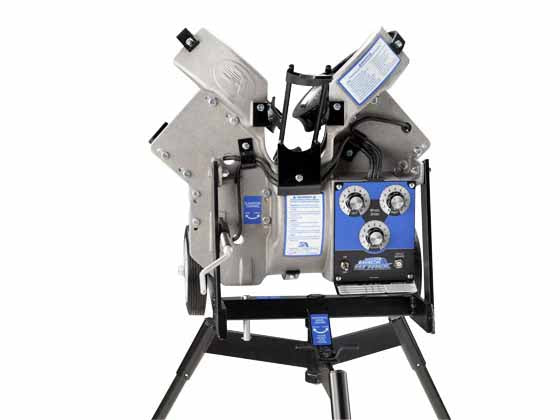
Jr. Hack Attack Baseball Pitching Machine
- Portable Pitching Mounds
- Indoor Pitching Mounds
- Softball Pitching Mats
- Pitching Platforms
- Little League Mounds
- Bullpen Mounds
- Turf Pitching Mounds
- The Perfect Mound
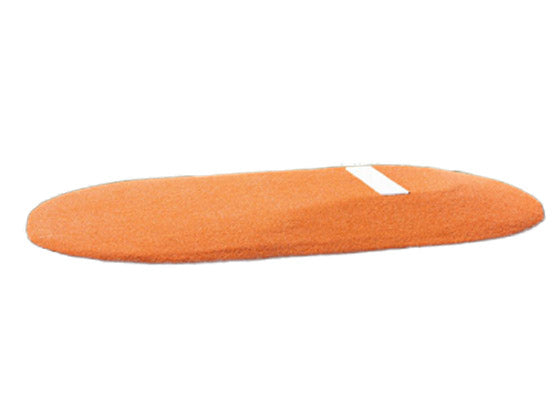
PortoLite 6" Full-Size Youth League Portable Pitching Mound
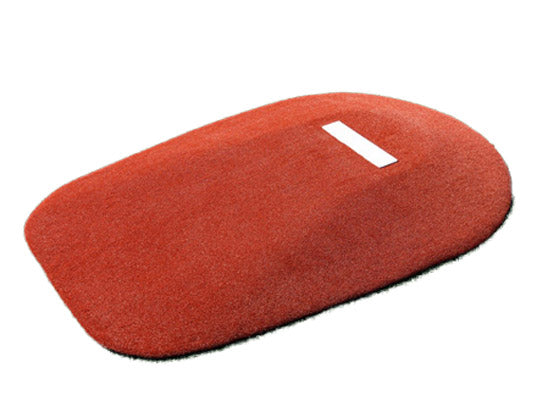
Portolite 10" Full Length Portable Pitching Mound for High School
- Baseball Bags
- Batting Tees
- Pitching Dummies
- Pitching Machine Balls
- Pitching Training Aids
- 9 Hole Pitching Nets
- Field Screens
- Softball Pitching Screens
- Hitting Stations
- Rebounders and Pitchbacks
- Pitching Targets
- Batting Cages
- Batting Cage Frames
- Batting Cage Nets
- Batting Cage & Pitching Machine Combo
- Hitting Turtles
- Baseball Bats
- Softball Bats
- Baseball Gloves
- Bases & Home Plates
- Batting Mats
- On Deck Circles
- Baseball Caddies
- Ball Buckets
- Home Plate Halos
- Windscreens
- Scoreboards
- Batter's Box Templates
- Clay & Conditioner
- Baseball Field Drags
- Baseball Chalk Liners
- Baseball Field Tarps
- Field Armor
- Helmet and Bat Racks
- Paint Sprayers
- Baseball Field Rakes
- Water Removal Tools
- Chain Link Backstops
- Rubber Backstops
- Backstop Padding
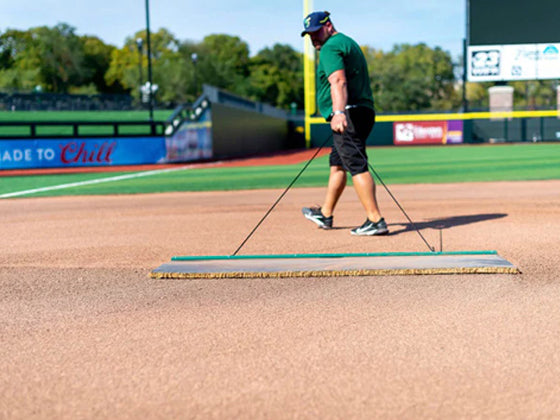
Cocoa Mat Hand Drag
- Track My Order
- Help Center
- Purchase Orders
Mon-Fri 7am - 4pm PST

Mastering the Pitching Distance for 12U Baseball: Essential Tips for Coaches and Players
Anytime Baseball Supply is a participant in the Amazon Services LLC Associates Program, an affiliate advertising program designed to provide a means for sites to earn advertising fees by advertising and linking to Amazon.com
Pitching Distance for 12U Baseball - USSSA, Little League, Dixie, And More!
In the realm of 12U baseball, when considering the appropriate pitching distance for young pitchers, it’s accepted that they pitch from a range between 46 to 50 feet. This measurement is vital not only for gameplay but also plays an integral role in the growth and skill development of these pitchers. The following guide will delve into the significance of this pitching standard and its effects within the game.
Key Takeaways
In 12U baseball, age-appropriate pitching distances are crucial for long-term health and skill development, with standard distances ranging from 46 to 50 feet to prevent undue strain on young athletes.
Coaches are key in the strategic development of young pitchers, balancing practice with game time to avoid overuse and carefully introducing concepts in line with players’ readiness.
Providing proper equipment tailored to a player’s role, playing surface, and style is essential for the safety and competitive performance of 12U baseball players.
Understanding 12U Baseball Pitching Distances

In the game of baseball, particularly with 12U, pitching is both an artful and scientific endeavor. The distance between home plate and the pitching mound plays a critical role in shaping how the game unfolds. Kevin King stands atop that pitcher’s mound, bringing with him a deep understanding from his time at Anytime Baseball Supply along with insightful writings for the Daily Diamond blog.
Importance of Age-Appropriate Pitching Distances
The precision with which we determine the pitching distances for children in baseball is crucial for their lasting health and advancement of skills. Setting suitable distances based on age allows these young pitchers to hone their craft while ensuring that they don’t overexert themselves physically during this critical phase of growth.
Coaches, by incrementally adjusting the distance from which a child pitches and monitoring pitch intensity in coach pitch scenarios, are instrumental in protecting these budding athletes. Such vigilance helps avert injuries that have the potential to prematurely halt aspiring careers before they fully take off.
Standard Pitching Distance for 12U Baseball
In the world of 12U baseball, which includes organizations like Dixie Youth Baseball and spans minor to senior league divisions, there exists a range of league pitching distances. These vary according to different standards set within each baseball league. The USSSA mandates that pitches be thrown from a distance of 50 feet. Conversely, Little League Baseball specifies a slightly shorter little league pitching distance at 46 feet. For players between the ages of nine and twelve years old, MLB Pitch Smart guidelines—which are followed by both major league baseball and professional leagues—recommend a pitching range that falls between these two extremes: from 46 up to as much as 50 feet. Outfield fence distance also significantly influences how the layout of a baseball field is conceived.
The establishment of these distances is far from random—they result from careful deliberation aimed at ensuring young athletes can thrive while playing now but also preparing them for eventual transition onto larger fields typical in higher levels such as major league play.
As 12U baseball players progress from using a batting tee to aiming for the outfield fence, honing their skills at the correct pitching distance becomes essential. Coaches equipped with effective techniques and tools are capable of leading these aspiring athletes on a path where the baseball field transforms from merely a place of play into a stage for achieving excellence.
Frequently Asked Questions
What is the importance of pitching distances in 12u baseball.
In 12U baseball, it is critical to adjust pitching distances based on the age and skill level of players for their progression and to prevent injuries. These distances differ among leagues, reflecting the necessity of conforming to these guidelines for the health and advancement of young athletes.
How do different leagues vary in pitching distance for 12U players?
When training 12U players for pitching, it’s important to take into account the different recommended pitching distances across leagues. Little League advises a distance of 46 feet, while USSSA suggests that pitches be thrown from 50 feet away. Meanwhile, MLB Pitch Smart proposes a variable range between 46 and 50 feet for this age group. These distinctions in league guidelines should be considered during practice sessions.
What strategies should coaches use for 12U pitching success?
To secure success in pitching for 12U players, coaches must focus on preventing injuries and create a balance between practice sessions and actual game play. They need to offer clear, consistent guidance while progressively incorporating more advanced pitching techniques as the players develop.
Why is balancing practice and game time important for 12U pitchers?
It’s crucial to maintain a careful equilibrium between practice and game time for pitchers aged 12U in order to avoid injuries caused by overuse while also promoting comprehensive skill advancement via diverse pitching experiences.
What factors should be considered when selecting equipment for 12U players?
When choosing equipment, it’s essential to take into account the player’s personal style as well as their age and position. Consider the type of playing surface to guarantee not only a competitive edge but also safety during play.
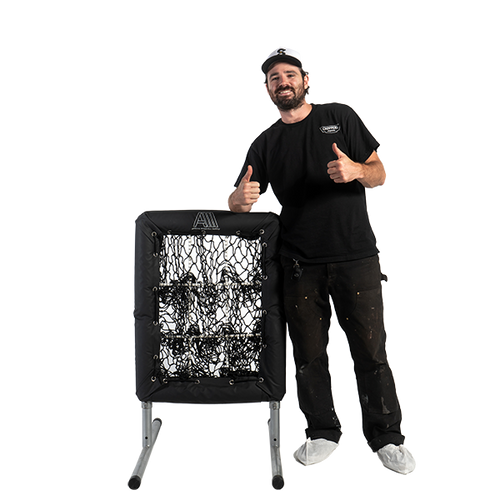
KEVIN M. KING
Founder / Senior Contributor
Kevin King, founder of Anytime Baseball Supply and senior contributor of the Daily Diamond blog, started the company 7 years ago. He loves the Los Angeles Dodgers, playing the occasional pick up baseball game, skateboarding and his dog Panzer. Despite his busy schedule, he still finds time to contribute to the blog.
Continue reading

Mastering Pitching Mound Distances: A Comprehensive Guide for Every League
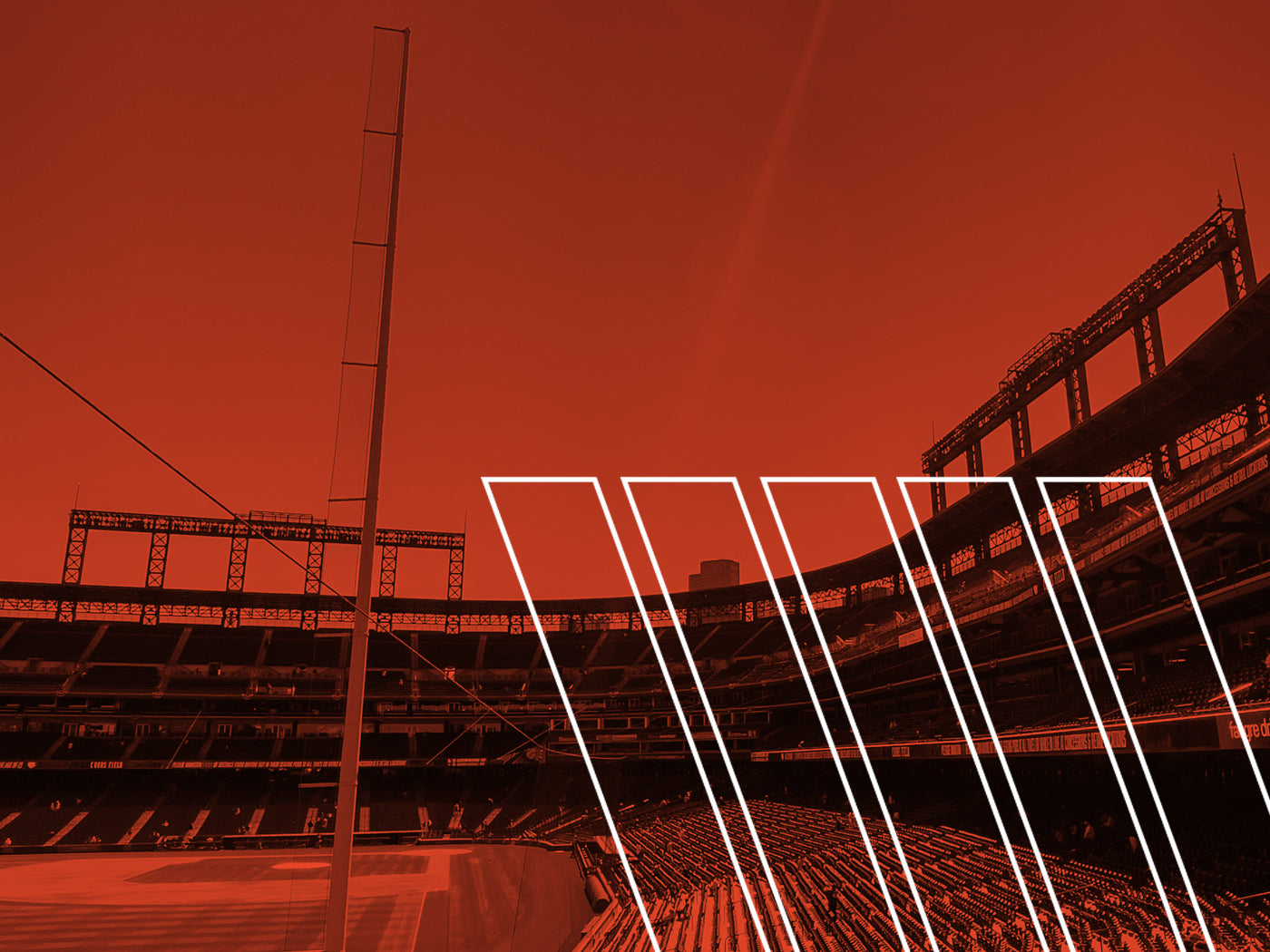
How to Pick the Right Foul Pole for Your Baseball Field
Leave a comment
All comments are moderated before being published.
This site is protected by reCAPTCHA and the Google Privacy Policy and Terms of Service apply.
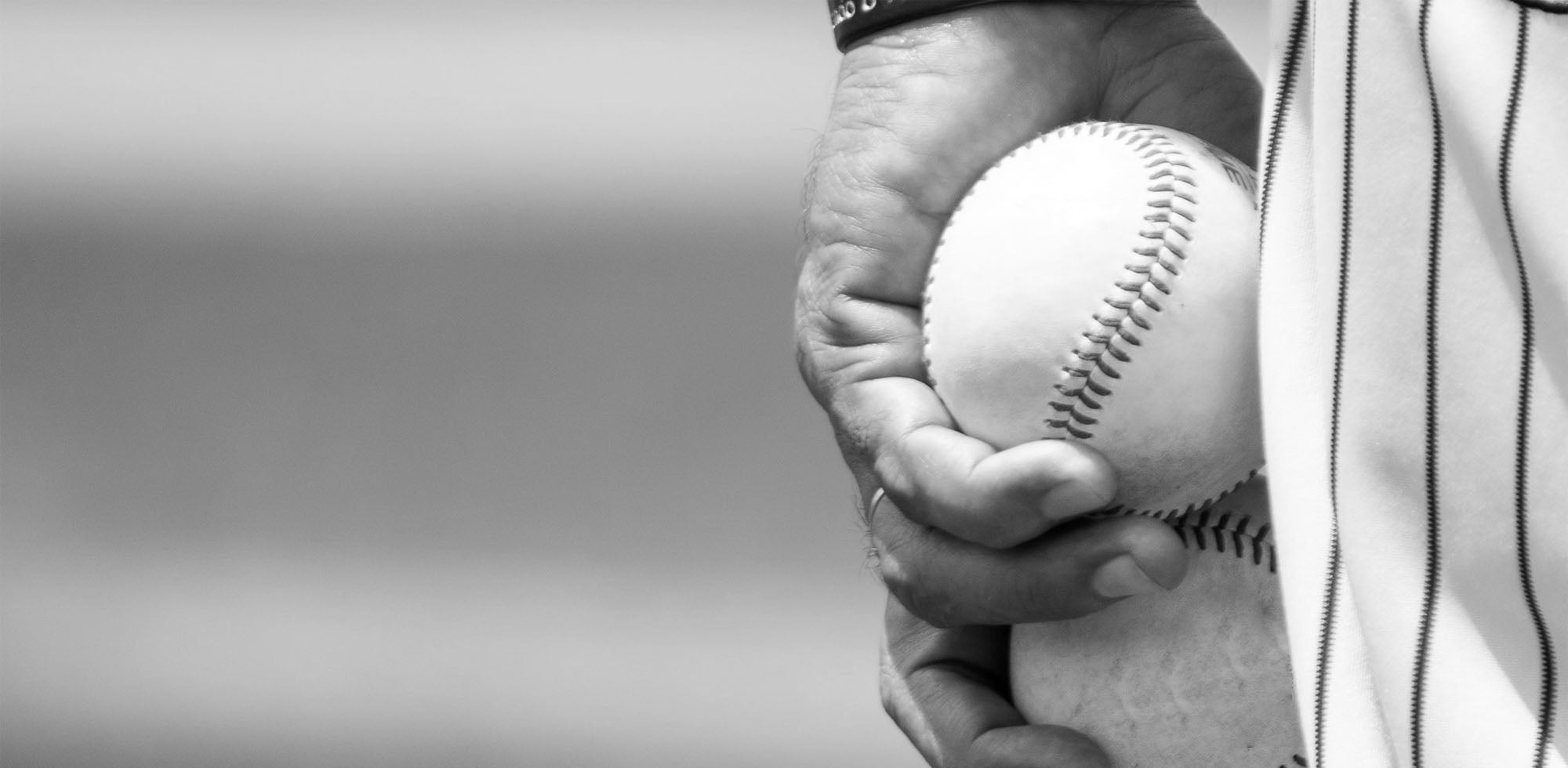
Subscribe to our newsletter
Subscribe to our insider's newsletter to get baseball training tips, how-tos, and promos on the hottest baseball gear. Plus you'll receive a promo code to save $20 off your next purchase - that could buy you 4 ballpark hot dogs!
Free shipping
Free ground shipping on all orders $49+
Here to help
Call us at (888) 466-0009 Mon - Fri, 7am - 4pm PST
Financing Available
Take advantage of our Buy Now, Pay Later program for all baseball equipment.
Secure payment
We use encrypted SSL security to ensure that your information is 100% protected.
Does One-Knee Stance Mean WORSE Blocking? (What stats tell us)
Catchers | is traditional stance outdated 3 mlb catchers & coaches answer the question, should softball catchers use one-knee stance.
- Like Father, Like Son: Top 10 Father-Son Duos to both play Major League Baseball
- Is Your Hitter Afraid of Stingers? Use This Hitting Drill To Overcome Fear of Hand Sting in Baseball and Softball
- The best infield drills at home: Low Intensity Skill Routines
- Aaron Judge Shares His FULL Pregame Hitting Routine
Youth Baseball Field Size by Age & League
- UPDATE – Life one year after retiring from MLB
- What is “Plate Discipline” in baseball? (And softball)
- Fast Pitch vs Slow Pitch Softball: What’s the difference?
- Hilarious Good Luck Rituals of Famous Athletes
- Fixing Common Backhand Mistakes | Tips on Coaching Youth Baseball #3
- Active Catch Routine | Tips on Coaching Youth Baseball #2
- “Quick Win” for Fielding | Tips on Coaching Youth Baseball #1
- Baseball Tryout Tips | #1 biggest tip from MLB Pro Scout
- Best Training Bats to Increase Bat Speed
- Best Amazon Prime Day Deals for BASEBALL 2022
- Former MN Twin shares Quick Tip to be a better hitter (Video)
- Hilarious Baseball Moments

Youth baseball field size will vary depending on the age group and the specific league or organization’s guidelines. Here are some general guidelines for youth baseball field sizes by age, league and level of play.
NOTE: Please consider this resource on Youth Baseball Field Size a work in progress. If you have information to add, comment below and I will see if it should be added to this post. Thank you!
Youth Baseball Field Size by Age
Here is a general guide to the youth baseball field size by age. Field sizes can vary depending on the age group and the specific league or organization’s guidelines. For more specifics by youth league, see below.
- Base Paths: 45 feet
- Pitching Distance: Approximately 40 feet
- Base Paths: 60 feet
- Pitching Distance: Approximately 40-50 feet
- Pitching Distance: 46 feet (Little League), 50 feet (PONY Baseball), or variations based on local league rules.
- Base Paths: 70 feet
- Pitching Distance: 50 feet
- Base Paths: 90 feet
- Pitching Distance: 60 feet, 6 inches
Field dimensions may vary based on the specific league or organization.
NOTE: Different Youth Leagues May Use Different Youth Baseball Field Sizes
One example of two youth baseball leagues that use different field sizes for players of the same age group is Little League Baseball and PONY Baseball. Let’s compare the field sizes for their respective standard divisions, which are typically for players aged 9 to 12 years old:
Little League Baseball (Standard Division – Ages 9-12):
- Base Paths (Distance Between Bases): 60 feet
- Pitching Distance: 46 feet
PONY Baseball (Bronco Division – Ages 11-12):
- Base Paths (Distance Between Bases): 70 feet
As you can see, Little League’s standard division uses a 60-foot base path and a 46-foot pitching distance, while PONY Baseball’s Bronco division, also for players aged 11 to 12, uses a 70-foot base path and a 50-foot pitching distance. This means that players in the same age group will experience different field dimensions and playing conditions when participating in these two youth baseball organizations.
These variations in field sizes are due to the different rules and regulations set by each organization, and they aim to align the game with the physical and developmental abilities of the players in their respective age groups.

List of Popular Youth Leagues
Several youth baseball leagues are popular and well-known across the United States. Some of the most popular youth baseball leagues include:
- Little League Baseball: Little League is one of the most recognized and widely played youth baseball organizations globally. It offers various divisions based on age, with the Little League World Series being a famous international tournament.
- PONY Baseball: PONY (Protect Our Nation’s Youth) Baseball is another significant youth baseball organization with divisions for different age groups.
- Cal Ripken Baseball: Named after the legendary baseball player Cal Ripken Jr., this league is associated with the Babe Ruth League and focuses on player development and fair play.
- Babe Ruth Baseball: The Babe Ruth League offers baseball programs for players of various age groups and is a well-established youth baseball organization.
- American Legion Baseball: American Legion Baseball is a youth baseball program affiliated with the American Legion, and it often emphasizes character development and community involvement.
- USSSA Baseball: The United States Specialty Sports Association (USSSA) offers youth baseball programs, including various age divisions and competitive tournaments.
- National Amateur Baseball Federation (NABF): NABF is a youth baseball organization that organizes national and regional tournaments for amateur baseball teams.
- Dixie Youth Baseball: Dixie Youth Baseball is a popular league in the Southern United States, providing youth baseball programs at various levels.
- AABC (American Amateur Baseball Congress): AABC offers youth baseball programs, including the Connie Mack World Series for older players.
These are some of the most well-known youth baseball leagues in the United States, but there are many more regional and local youth baseball organizations that cater to various age groups and skill levels. The popularity of these leagues can vary by region, and the choice of league often depends on the preferences and goals of players and their families.
Youth Baseball Field Sizes by League
If you have any specific source requirements or need more detailed references, I recommend consulting the rules and regulations of the particular youth baseball league or organization you are interested in, as they will provide the most accurate and up-to-date information.
Free Resources for Youth Baseball:
But while we’re on the topic of baseball field size, let’s keep going. Here’s how those youth baseball field size compares to college baseball field size and the pros.

Baseball field dimensions at the college and professional levels, such as Major League Baseball (MLB), are regulated by specific guidelines and standards.
The guidelines and standards for college baseball field size, as well as many other rules and regulations governing college baseball, are established by the NCAA (National Collegiate Athletic Association). The NCAA is the governing body for college sports in the United States and is responsible for setting and enforcing the rules for various sports, including baseball.
Here are the typical field dimensions for college and professional baseball:
Major League Baseball (MLB):
What are the standard baseball field sizes in MLB? The measurements for Major League baseball field size are as follows:
- Home Run Fence: Varies by stadium but is typically around 330 to 400 feet from home plate to the outfield fence.
- Outfield Fence Height: Typically 8 to 12 feet.
- Infield Dimensions: The distance between the bases and the pitcher’s mound remains the same at 90 feet and 60 feet, 6 inches, respectively. However, the shape and size of the infield can vary from stadium to stadium.
NCAA College Baseball (Division I):
What are the standard baseball field sizes in college?
- Home Run Fence: Varies depending on the stadium but is typically around 330 to 400 feet.
It’s important to note that while these dimensions are typical for professional and college baseball, there can be variations depending on the specific stadium or ballpark. Some stadiums might have unique features, such as varying outfield wall heights, power alleys, or other design elements that can affect field dimensions. Additionally, college baseball in divisions other than Division I may have slightly different standards, but Division I is the most widely recognized and televised level of college baseball.
For the most accurate and up-to-date information on field dimensions at the college and professional levels, it’s best to refer to the official websites of the respective leagues, teams, or stadiums, as they may provide specific details about their facilities.
What is a Standard Baseball Field Size in Meters?
A standard baseball field, such as the one used in Major League Baseball (MLB), adheres to field dimensions defined in feet and inches rather than meters. However, if you would like to convert these dimensions to meters, here are the approximate conversions for the key measurements of a baseball field:
- Base Paths (Distance Between Bases): 90 feet = approximately 27.43 meters
- Pitching Distance: 60 feet, 6 inches = approximately 18.44 meters
- Home Run Fence Distance: Typically, the distance to the outfield fence varies but can range from approximately 100 to 122 meters.
These measurements are approximate conversions, and it’s important to note that baseball fields may have some variations in dimensions depending on the specific field and the regulations of the league or organization.
Baseball Field Dimensions – FAQ’s
Here are some of the most frequently asked questions related to baseball field sizes and a baseball field’s dimensions, layout, and rules. Here are some of the most common baseball field size questions:
- What are the standard base path and pitching distance in baseball? (Answer: 90 feet base paths and 60 feet, 6 inches pitching distance in Major League Baseball)
- How far is the outfield fence from home plate in a regulation baseball field? (Answer: This can vary but is typically around 330 to 400 feet in Major League Baseball.)
- What is the distance between the pitcher’s mound and home plate in Little League Baseball? (Answer: 46 feet for the Major Division)
- What are the dimensions of a youth baseball field for ages 9-12? (Answer: Typically, 60-foot base paths and a 46-foot pitching distance for this age group in Little League and similar organizations.)
- What is the infield size on a standard baseball field? (Answer: The infield typically includes the pitcher’s mound, bases, and the area around them. Exact dimensions can vary, but it generally fits within the overall field dimensions.)
- How long is a Little League base path for T-Ball? (Answer: 50 feet for T-Ball)
- What are the outfield fence dimensions in high school baseball fields? (Answer: The outfield fence distance can vary but is typically between 300 and 400 feet.)
- What are the measurements for the pitcher’s mound in college baseball? (Answer: The pitcher’s mound is typically 60 feet, 6 inches from home plate in college baseball, similar to MLB.)
- What are the distance and height requirements for the outfield fence in youth baseball? (Answer: These can vary by league and age group but are generally specified in the rules and regulations.)
- What are the field dimensions for softball compared to baseball? (Answer: Softball fields have shorter base paths and pitching distances compared to baseball fields, and the pitching rubber is typically closer to home plate.)
These questions cover a range of topics related to baseball field sizes, from the standard dimensions in different leagues to specific measurements for different age groups and variations.
More Free Resources from the Pros:
About Author
If you have any problems, please contact Sarah(at)probaseballinsider.com. Doug Bernier (Minnesota Twins) & wife Sarah co-founded Pro Baseball Insider (PBI) together. PBI is a platform where professional baseball players can donate their knowledge free to the public. For help, please email Sarah(at)probaseballinsider.com or use this form: Contact PBI .
Related Posts

Leave A Reply Cancel Reply
- Gloves & Mitts
- Protective Gear
- Baseball Listicles
Pitching Distances – Pitcher’s Mound from Home Plate
- September 5, 2023
Pitching distance is the distance from the pitcher’s mound to the front of home plate. Note that this is certainly not the distance from the ball’s release point to the rear point of the plate, which can be several feet shorter depending on the pitcher’s height and method of delivery.
The pitching distance varies depending on baseball or softball and the age levels for each. Below we’re going to cover pitching distances for 10u, 12u, high school, college, all the way to the professional leagues. Read on!
Mound to Plate Pitching Dimensions
What is the major league baseball pitching distance.
The distance from the pitching rubber to the rear point of home plate is 60’6″ for MLB, all Minor Leagues, college, high school, independent leagues, Base Ruth, Senior League, and just about all leagues ages 14 and above.
What is the Little League Pitching Distance?
With six divisions, Little League baseball field dimensions change as children get older. The Little Leagues can range from ages as young as 4 to as old as 16.
There are strict rules in place around the distance from the pitcher’s mound, the size of the infield, distance to the bases, and distance to the outfield walls.
According to the official Little League rules, the pitching distance is 46 feet. The distance between the bases is 60 feet. This distance compares to 60′ 6″ pitching distance and 90 feet between the bases in MLB.
Therefore, the distance a Little League player has to pitch is 14′ 6″ or about 24% shorter. The actual dimensions to the fences depend on age. These dimensions are put into place to help in performance while lowering the risk of injury.
What is the PONY Pitching Distance?
The PONY League is a worldwide youth baseball organization that has a specific requirement for different age divisions. The pitching distances for the age divisions are as follows:
- Colt/Palomino (ages 15 – 19): 60 feet, 6 inches
- Pony (ages 13 – 14): 54 feet
- Bronco (ages 11 – 12): 48 feet
- Mustang (ages 9-10): 44 feet
Softball Pitching Distances
In high school and college softball, the distance from home plate to the front of the rubber to the center of the pitcher’s mound is an even 43 feet, while the rubber measures 24 inches long and six inches wide.
The rear tip of the plate to the front edge of the pitcher’s plate is 46 feet for slowpitch softball when using the 12-inch ball and 50 feet for female slowpitch leagues that used the 11-inch ball.
The distances for fastpitch softball depend on the age and softball size. For ages 8-9 with an 11-inch ball, the distance is 30 feet. For ages 10-11 with an 11-inch ball, the distance is 35 feet. Ages 12-13 with a 12-inch ball pitch from 40 feet. All leagues from ages 14 on up that use a 12-inch ball pitch from 43 feet.
It’s interesting to note that during the 1996 and 2000 Summer Olympics, the fastpitch softball distance was a mere 40 feet. In 2011, the Pony/ASA softball leagues allowed pitching from 40 feet through ages 18 and up but then changed it to the standard 43 feet.
History of Pitching Distances
From the beginning of baseball in 1845 to 1880, the pitching distance was 45 feet. In the beginning, the pitcher had to throw the ball from behind a 12-foot line. In 1863, another 12-foot line, 48 feet from home plate, was added to create a pitcher’s box. The dimensions of this box did not change for nearly two decades. The front line was 45 feet from home plate.
We must note that in the 1870s, baseballs were mass-produced with virtually no quality control. The dead ball was usually very mushy, and fans generally witnessed very low scoring games.
Over three years from 1877 to 1880, batting averages across the newly formed National League plummeted 26 points from .271 to .245. Strikeout rates skyrocketed to nearly three times the amount in 1871 due to pitchers perfecting curveballs. The league ERA was a slim 2.37, and the league was losing money at an alarming rate.
Harry Wright, known as the ‘ Father of Professional Baseball ‘ and founder of the Cincinnati Red Stockings, came to the rescue. In 1877, Wright had the pitcher’s box moved back five feet to 50 feet during an exhibition game. In addition, he had an exhibition the following year in which six balls were needed for a walk instead of nine.
Every pitch was counted as a ball or strike. Little known to many fans that in those days, only pitches swung on and missed were strikes. Instead of throwing underhand, as, by baseball rules, Wright had the pitchers throw any way they felt fit.
Before the 1880 season, Wright insisted that a flat bat be used with a cork-centre ball, which would create a livelier ball. By the end of December 1882, many of Wright’s proposals were tried and used in the game.
The pitching mound went back to 50 feet, a walk was awarded on six balls, and the batter could no longer ask for a high or low ball to hit. The most significant change was that the pitcher’s box was set at 56 feet.
Key to note, the pitching distance was measured from home plate to the front of the box in those days, unlike today, where it is measured to the rubber. It must also be noted that before 1893, the pitching distance was measured to the center of the plate and not the rear point.
The change in pitching distance increased hitting in 1881, but that was short-lived. The strike count was raised to four to add more offense, and the ball count for a walk was reduced to four in 1889. The length of the pitcher’s box was reduced a foot from seven feet to six feet and finally to 5.5 feet. The running start windup was banished in 1885.
In 1892 the pitching distance was only about 4 feet, 3 ½ inches shorter than that in today’s game, because before the introduction of the pitching rubber at 60’6″ in 1893, the pitcher threw from a box, 50 feet from the plate, with a backline 5 ½ feet further back.
Leave a Reply Cancel reply
Your email address will not be published. Required fields are marked *
Save my name, email, and website in this browser for the next time I comment.

Optimizing 12U Pitching Distance: Safety, Skill Growth, and Player Confidence
Imagine your child stepping onto the mound, glove in hand, ready to pitch. At 12 years old, they’re not just playing; they’re honing their skills in a sport they love. But did you know that the distance they pitch from can significantly impact their development and enjoyment of the game? In youth baseball, particularly for the 12-and-under (12U) age group, pitching distance plays a crucial role in shaping young athletes.
Understanding the standard 12U pitching distance helps ensure that young players are competing on a level playing field that promotes safety, skill development, and confidence. Whether you’re a coach, a parent, or an enthusiast, knowing these details can make a big difference in how you support your young pitcher. Let’s dive into why this specific pitching distance is used and how it benefits the players.
Table of Contents
Understanding 12u Pitching Distance
The standard pitching distance for the 12-and-under (12U) age group significantly impacts the dynamics of youth baseball. Grasping the ins and outs of 12U pitching distance fosters an environment conducive to safety, skill development, and overall enjoyment for young players.
Key Factors Influencing the Distance
Three main factors play pivotal roles in determining the appropriate pitching distance for 12U baseball:
- Player Safety: Ensuring players are not too close to reduce the risk of injury from batted balls.
- Skill Development: Positioning young athletes appropriately to challenge their abilities while encouraging growth and improvement in pitching skills.
- Player Confidence: Maintaining a distance that helps build young pitchers’ confidence, neither too challenging nor too simple.
Continual assessments adjust these distances as players grow and develop, tailoring to their evolving capabilities and needs.
The Importance of Correct Pitching Distance
Maintaining the correct pitching distance is crucial for several reasons:
- Encourages Proper Mechanics: A suitable distance allows young pitchers to develop proper throwing techniques without straining their arms.
- Promotes Fair Competition: Even playing fields result from standard distance measures, ensuring all participants face similar challenges.
- Enhances Enjoyment and Success: When players feel they’re competing on a level playing field, their enjoyment and success in the game increase.
By setting the right pitching distance, you help ensure that young athletes have a positive, growth-oriented experience in baseball.
Benefits of a Standard 12u Pitching Distance
Adopting a standard 12u pitching distance offers significant benefits for young players, enhancing both their safety and skill development. Through uniform distances, leagues ensure a level playing field that supports comprehensive development for pitchers aged 12 and under.
Safety Considerations for Young Pitchers
Maintaining a standard 12u pitching distance plays a critical role in minimizing risk for young athletes. A set distance of 46 feet, common for 12u baseball, helps in preventing overuse injuries. It ensures pitchers aren’t overextending themselves, which can lead to stress-related injuries common in young throwers, like elbow and shoulder strains. By providing a pitching distance tailored to their physical capacities, young players can enjoy the game while their bodies develop without undue stress.
Improved Skill Development
Having a set 12u pitching distance advances skill development in young athletes. The 46-foot distance is selected to match the physical abilities of most 12 year-olds, enabling them to effectively work on their pitching mechanics without straining. This setup not only facilitates a focus on technique but also allows players to improve at a pace suitable for their age. Consistency in pitching distance helps in mastering pitch control, enhancing their ability to strike across varying scenarios, which is crucial as they progress in competitive levels.
Comparing 12u Pitching Distances Across Leagues
Pitching distances in 12U baseball fluctuate depending on the league. This variance in distance can significantly affect player development and competition level.
Differences in League Regulations
Pitching distances for 12U players aren’t universal, they vary extensively among different baseball leagues. For example, the Little League recommends a pitching distance of 46 feet. However, the Babe Ruth League sets the mound at 50 feet for players in its Cal Ripken Division aimed at the same age group. These discrepancies can often reflect the individual league’s focus. Little League emphasizes safety and skill development, while the Babe Ruth League may prioritize adapting to larger field sizes used in older age groups.
Impact on Players’ Performance
The distance from which a player pitches can greatly influence their effectiveness and health. A shorter distance, like 46 feet, lets players refine accuracy without excessive strain on their arms, aligning with safety recommendations. Conversely, pitching from 50 feet requires more strength and speed, which can enhance a player’s transition to larger fields in the future. However, this increased distance may also elevate the risk of overuse injuries if not monitored carefully. Therefore, players and coaches need to consider these impacts when choosing a league, as each decision affects both immediate performance and long-term development in baseball.
Training Tips for 12u Pitchers
In youth baseball, refining your technique and boosting your strength and accuracy as a 12u pitcher can significantly impact your performance. The right training approaches enable you to thrive on standard pitching distances, such like 46 feet in Little League.
Techniques to Maximize Pitching Efficiency
Focus on Perfecting Your Pitching Mechanics: Pitching efficiency starts with mastering the fundamentals. Ensure your stance, grip, and delivery are consistent. Emphasize a balanced posture throughout the pitch and follow through to reduce the risk of injury and improve the ball’s trajectory.
Implement Mental Rehearsals: Visualize successful pitches to enhance your mental toughness and focus. Before games and during practice, spend time imagining perfect game scenarios, which can help improve your actual performance.
Record and Analyze Your Pitches: Use video recordings to review your pitching mechanics. Identifying areas for improvement can lead to quick and effective adjustments that enhance your overall efficiency.
Exercises to Increase Strength and Accuracy
Incorporate Pitching-Specific Drills: Engage in drills that mimic pitching motions to build muscle memory and improve accuracy. Examples include towel drills, where you snap a towel through your pitching motion to refine speed and control.
Utilize Resistance Training: Strengthen your core, legs, and arms with resistance training exercises like squats, push-ups, and resistance band workouts. A strong body foundation improves your pitching power and stability.
Practice Targeted Throwing: Regularly practice throwing at specific targets to hone your accuracy. Set up targets at different distances and heights to challenge yourself and measure progress.
Understanding the right pitching distance for 12U players is crucial for their growth and safety in baseball. By choosing a distance that matches their developmental needs—whether it’s 46 feet in Little League or 50 feet in the Babe Ruth League—you’re setting them up for success. Remember the importance of incorporating effective training techniques and exercises to boost their pitching skills. With the right guidance and practice, your young pitcher will not only improve their game but also build confidence on the mound. Keep fostering their love for the game while ensuring they play safely and effectively.
Master the 2 Tee Drill: Enhance Your Baseball Swing and Accuracy
Softball vs Baseball Pitching: Styles, Risks, and Training Insights
Leave a Comment Cancel reply
Save my name, email, and website in this browser for the next time I comment.
Store Hours:
Monday – Thursday 10 am – 6 pm Friday 10 am – 7 pm Saturday 9:30 am – 5:30 pm Sunday 11 am – 5 pm For holiday hours please see our Facebook page .
Sports Traders Duncan Location:
354 Trunk Road, Duncan BC V9L 2P6 Tel: 250-746-8761 • Fax: 250-746-6587 [email protected]
© 2024 Scribe

- Privacy Overview
- Strictly Necessary Cookies
This website uses cookies so that we can provide you with the best user experience possible. Cookie information is stored in your browser and performs functions such as recognising you when you return to our website and helping our team to understand which sections of the website you find most interesting and useful.
Strictly Necessary Cookie should be enabled at all times so that we can save your preferences for cookie settings.
If you disable this cookie, we will not be able to save your preferences. This means that every time you visit this website you will need to enable or disable cookies again.

- Overall Total $
Playing rules not covered in the Travelball Select Internet version on www.travelballselect.com revert to the Official Rules of Major League Baseball by Triumph Books or the online MLB rules at http://mlb.mlb.com/mlb/official_info/official_rules/foreword.jsp .
Local and State Directors have the right to adjust rules for local and state play with the approval from Travelball Select.
- THE PLAYING FIELD
Table 1 describes the recommended mound height, rubber-to-plate, base-to-base, and fence distances for each age division. The rubber-to-plate distance is measured from the rear of home plate to the front of the pitching rubber or coach’s pitching plate.
Table 1. Recommended playing field dimensions Age Division Mound Height Rubber-to- Plate Distance Base-to-Base Distance Recommended Fence Distance
8U Kid Pitch 40’ 60’ 9U 46’ 65’ 10U 46’ 65’ 11U 50’ 70’ 12U 50’ 70’ 13U 60’ 90’ 13U 54’ 80’ 14U 60’ 90’
- UNIFORMS AND EQUIPMENT
- Players must be uniformed with proper baseball attire. It is recommended that the numbers are at least 4” in height on all jerseys. Only the director can make rulings on uniform legality. No one can protest uniforms.
- All offensive players participating in a TbS Baseball event must wear a double ear flapped helmet while on the playing field. This includes bat boys and bat girls while performing their duties. Youth coaches under 18 years of age must adhere to this standard.
- If the umpire observes any violation of these rules, he or she directs the violation to be corrected.
- The catcher must wear a head protector, body protector, protective cup, shin guards, and a mask with a throat protector. The throat protector, which is part of or attached to the mask, must adequately protect him. The helmet must have full ear protection. The head, face, dual ear flaps, and throat protector can be one piece.
- No Metal Cleats are allowed at Elizabethtown or The Shipyard.
- Bats must be made of an approved material, and they must be smooth and round.
- Bats must be certified by the manufacturer to meet a Bat Performance Factor of 1.15 or less.
- BBCOR bats will be required in the 14u division.
- For 13U bats will be restricted to a -5 ratio or heavier. (The weight of the bat in ounces as compared to its length in inches, must be no greater than 5).
- Penalty – the bat will be removed from the playing field by the umpire and the manager of the team will be warned against further use. If the illegal bat is discovered after the end of the play, and the play results in the batter/runner safely reaching first base, the batter/runner will be declared out and all runners must return to the last base legally occupied prior to the play. No run may score on this play. Any out that results on the play will stand. On a second offense, the above penalties will apply and the manager of the offending team will be removed from the field and will be prohibited from managing for the remainder of the game.
- A batter using an altered bat is declared out, and all runners return to the base occupied at the time of the pitch. A batter is deemed to have used or attempted to use an illegal bat if the player brings such a bat into the batter’s box. Any out or outs made during the play stand.
- Name will supersede number with regards to the official lineup.
- A flip of a coin between the two teams determines the home team for each pool play game. For bracket play games, the highest seed is home team.
- Age clarification
*9U Division Players who turn 10 prior to May 1 of the current season are not eligible unless they are in the 3rd grade. Also, any player turning 11 prior to May 1 will not be eligible. Players who are 9U eligible are eligible for this division regardless of grade.
*10U Division Players who turn 11 prior to May 1 of the current season are not eligible unless they are in the 4th grade. Also, any player turning 12 prior to May 1 will not be eligible. Players who are 10U eligible are eligible for this division regardless of grade.
*11U Division Players who turn 12 prior to May 1 of the current season are not eligible unless they are in the 5th grade. Also, any player turning 13 prior to May 1 will not be eligible. Players who are 11U eligible are eligible for this division regardless of grade.
*12U Division Players who turn 13 prior to May 1 of the current season are not eligible unless they are in the 6th grade. Also, any player turning 14 prior to May 1 will not be eligible. Players who are 12U eligible are eligible for this division regardless of grade.
*13U Division Players who turn 14 prior to May 1 of the current season are not eligible unless they are in the 7th grade. Also, any player turning 15 prior to May 1 will not be eligible. Players who are 13U eligible are eligible for this division regardless of grade.
*14U Division Players who turn 15 prior to May 1 of the current season are not eligible unless they are in the 8th grade. Also, any player turning 16 prior to May 1 will not be eligible. Players who are 14U eligible are eligible for this division regardless of grade.
- Time Limits
- All 8u games will be six (6) innings with a 1:30 time limit. No inning will start after this time. 2:05 time limit in the championship game.
- All 9u thru 12u games will be six (6) innings with a 1:45 time limit. No inning will start after this time. 2:20 time limit in the championship round.
- All 13u games will be seven (7) innings with a 2 hour time limit. No inning will start after this time. 2:30 time limit in the championship round.
- If a team uses a lineup that contains 10 players, the player in the EH position, while not actually playing a defensive position, is treated as such for substitution purposes.
- Any team that is not roster batting should declare all eligible substitutes by noting them as such on the official lineup that is exchanged with the opposing team and/or home plate umpire at the beginning of the game. Players not listed as eligible substitutes but appear legally on the online roster will be considered legal substitutes.
- If a team chooses to roster bat, then all players other than the nine defensive position players are extra hitters and can move freely in defensive positions.
- If a team is batting all present, uniformed players, with no eligible substitutes listed on the lineup card, and the number of players is nine or 10, that team is considered to be roster batting for the purposes of defensive substitutions and courtesy runners, unless the coach has specifically declared otherwise at the pregame plate conference.
- If additional players arrive after the game has started, those players are placed at the end of the batting order. If the coach declares at the pregame plate conference that he is not roster batting, the late players are listed on the lineup as eligible substitutes. (See Rule C.7)
- For teams that are not roster batting, starting players can withdraw and re-enter once (including designated hitters, for age divisions that allow them), provided that the players re-enter in their original position in the batting lineup.
- Teams can start a game with eight players provided they take an out for the ninth player. Teams must have a minimum of eight players to start a game. If the lineup drops below eight players, the game is declared a suspended game and is not rescheduled. The suspended game is then ruled a forfeit by the tournament or league director. Umpires have no authority to forfeit a game.
- Teams having eight players to start a game are automatically the visiting team.
- If a team’s ninth player arrives late to the game, the manager of that team must make an announcement at the plate conference before the game begins and advise both the plate umpire and the opposing team that he or she has a player that will be arriving late. When the player arrives, the player is announced to both the plate umpire and the opposing team and is placed in the ninth position in the batting order. The game resumes as if he or she was there at the start of the game. Until the player arrives, an out is recorded in the ninth position.
- If roster batting, players arriving after the game has started are added to the bottom of the batting lineup. If batting nine, or ten with an EH, players arriving after the game has started are legal substitutes as provided in rule C.2 above.
- If a player is removed from the game for illness or injury there will be an out recorded for his spot in the batting order (subject to rule 9).
- If a team drops below nine players due to illness or injury, an automatic out is recorded.
- If a team drops below nine eligible players due to an ejection or any reason other than illness or injury and leaves the game, an automatic out is declared in the batting order position of the player that left the game unless there is an eligible substitute.
- If a team drops below eight players for any reason, the game is ruled a forfeit by the tournament or league director and is not rescheduled.
- If roster batting, the ejected player’s position in the lineup shall be declared an out
- If batting 9 or 10 with EH, the ejected player may be replaced by an eligible substitute. If there are no eligible substitutes available, the position in the order shall be declared out.
- . A player that has left the game for any reason by missing an at bat cannot return to the game, except under rule C.12.
- Any player, coach, or umpire who is visibly bleeding must leave the field of play to stop the bleeding. When the bleeding has stopped and the injury is bandaged (if necessary), the player may return.
- A hitter can be designated (not mandatory) for any one starting player and all subsequent substitutes for that player.
- A starting defensive player cannot be listed as the designated hitter in the starting lineup.
- Failure to declare a designated hitter prior to the game precludes the use of the designated hitter during the game.
- The defensive player or any previous defensive player for whom the designated hitter subsequently bats, pinch-hits or pinch-runs for the designated hitter.
- The designated hitter or any previous designated hitter assumes a defensive position.
- A regulation game consists of six innings for age divisions 12U and below and seven innings for age divisions 13U and over, unless the game is shortened due to time limit, mercy rule, or field conditions or extended by extra innings due to tie. Game clock starts after home-plate meeting.
- 15 runs after three innings, or two-and-one-half innings (if the home team is ahead).
- 10 runs after four innings, or three-and–one-half innings (if the home team is ahead).
- 8 runs after five innings, or four-and-one-half innings (if the home team is ahead).
- If the home team has run-ruled the visiting team, the game is declared complete, and the winner is named.
- If eligible, a courtesy runner can be used any time for the pitcher or catcher of record only. A courtesy runner is defined as a player not currently active in the lineup. If roster batting, the courtesy runner is the player with last the recorded out. The courtesy runner does not have to be a legal substitute, but must be on the online roster and should be listed on the lineup card. The courtesy runner can only run for one player per inning. If batting 9 or 10, a pinch runner is defined as a LEGAL substitution for any runner other than the pitcher or catcher of record. If roster batting, pinch running is not legal as there are no legal substitutes and all players are in the active lineup.
- In all live pitch divisions, an intentional walk is granted upon request.
- Any outs recorded during a game once it is ruled a forfeit count toward the pitcher’s recorded outs.
- If a runner slides, he or she must slide directly into the bag.
- Runners are never required to slide, but if a runner elects to slide, the slide must be legal.
- If a tag play is imminent, the runner should slide or seek to avoid contact. Jumping over a player is not considered avoiding contact.
- PENALTY: The player initiating malicious contact is removed from the game. Note: There can be a collision where both players go head over heels that is not malicious contact. The key for malicious contact is intent. Umpires must ask themselves when making the call, “Did the runner deliberately or intentionally run into the fielder to break up the play or cause harm to the fielder?” If the answer is yes, then you have malicious contact, if the answer is no, then it is a clean play and you have nothing. Umpires must be careful when making this call to avoid ejecting players if the intent is not there. Keep in mind that the younger ages are just learning the game, and sometimes there is contact by the runner not sliding and running into the catcher. Remember, the key word is intent.
- If a defensive player is obstructing the runner (judgment call by the umpire), contact by the runner is not illegal unless it is malicious.
- If a game is called due to weather or other hazardous conditions, it is ruled an official game provided three and one half innings have been completed if the home team is ahead or four innings if the home team is behind for seven-inning games. It is ruled an official game provided two and one half innings have been completed if the home team is ahead or three innings if the home team is behind for six-inning games.
- Slashing is NOT ALLOWED. The batter will be declared out on the attempt. The ball will become dead immediately, the batter declared out and all runners will return to original base.
- All games stopped by an event official for weather or other reasons before the game is declared official are suspended games.
- Should a championship game be interrupted by weather conditions, darkness or unusual conditions and is not an official game as described above, then the championship game will be determined by the score at the end of the last full inning of play, regardless of length. If the score is tied after the last completed inning or the 1st inning of the game is not completed, the higher seed shall be named champion.
- PITCHING RULES AND LIMITATIONS
Teams are strongly encouraged to follow the USA Pitch Smart guidelines that are displayed below.
TbS Tournaments officials will not police these, they are simply guidelines to take care of your pitchers’ arms.
- A second trip to the same pitcher in the same inning causes the pitcher’s automatic removal from the mound (not the game).
- When a pitcher takes his or her position at the beginning of each inning, or when he or she relieves another pitcher, he or she is permitted warm-up pitches, not to exceed eight preparatory pitches to the catcher or coach.
- A pitcher removed from the pitching position cannot return to the pitching position during a game, but can re-enter to any other position
- Balks are enforced in all divisions where there are no restrictions on stealing.
- The balk will be a dead ball.
- A new rule that MLB posted in their 2013 MLB Rule book will be enforced by TbS. If there is a runner, or runners, it is a balk when—
The pitcher, while touching his plate, feints a throw to first or third base and fails to complete the throw; A pitcher is to step directly toward a base before throwing to that base and is required to throw (except to second base) because he steps. It is a balk if, with runners on first and third, the pitcher steps toward third and does not throw, merely to bluff the runner back to third; then seeing the runner on first start for second, turn and step toward and throw to first base. It is legal for a pitcher to feint a throw to second base.
- 8U PLAYER PITCH GUIDELINES AND REGULATIONS
- There are nine defensive players on the field.
- There are no lead-offs until the ball crosses the plate.
- No balks are enforced or called.
- Runners must stay on the base when the pitcher is in the pitching position and the catcher is in the catching position. If the runner leaves the base early, the umpire places the runner back on the last base occupied unless the runner was put out. This is not an appealable play. If forced, the runner advances one base ahead of the batter-runner. If the ball is put into play, the defense has the option of taking the play or placing the runner or runners back on base and the batter back in the batter’s box.
- The infield fly rule applies
- There is no advancement on dropped third strikes.
- The runner cannot steal home. The only way the runner can advance from third to home is if batted or forced home. If the defense fields the ball and attempts a play on a runner, the runner MAY attempt to advance home.
- Guidelines for Participants
The umpires handle unsportsmanlike conduct if the unsportsmanlike conduct is on the field of play. If an umpire has a problem with a fan or parent, the umpire should see the manager of the offending team and have the manager handle the situation. If the manager fails to handle the situation, then the umpire addresses the tournament official. TbS Baseball expresses the need for sportsmanship before, during, and after all events.
- Guidelines for Protest
If a team protests, the manager must notify the home plate umpire, and the umpire summons the tournament director to the field to address the protest. The protest fee is $100 in cash. The fee is returned if the protest is ruled in favor of the protesting team. Judgment calls cannot be protested. All protests MUST be done at time of alleged infraction or if it’s the last play of the game it MUST be done BEFORE the umpires leave the field.
- Guidelines for Ejections
- When a manager, player, coach, or trainer is ejected from the game, he or she can take no further part of that game.
- All ejections from games mandate that the individual(s) ejected must exit the park directly after the ejection is made.
- If an individual is ejected, that person must serve a 1-game suspension.
TbS Baseball expresses good sportsmanship first and foremost.
- Guidelines for Suspension and Dismissal
Any member of a TbS Baseball Event behaving in an unsportsmanlike manner can be subject to dismissal or suspension.
- Any verbal or physical attack on any TbS Baseball participant or member during a TbS Baseball event or following a TbS Baseball event can result in suspension or dismissal.
- Any player of TbS Baseball receiving compensation for playing in any TbS Baseball event is subject to suspension or dismissal.
- Any player competing under an assumed name or illegal birth certificate or ID card could result in suspension or permanent dismissal. This rule also applies to coaches and managers who have previous knowledge of such infraction.
- Submitting an insufficient check to an event director or league official can result in suspension or dismissal of the team if payment cannot be settled within a reasonable time frame.
- Any suspended member of TbS Baseball is not allowed to participate in any TbS Baseball event until such suspension is lifted. This rule applies to players, umpires, coaches, and directors.
- All records of suspension must be submitted to all parties involved including TbS Baseball in a timely manner.
- All suspended or dismissed parties have the right to present evidence and information on the reported infraction on their behalf within 7 days of notification of the suspension or dismissal. This evidence must be reviewed within thirty days by TbS Baseball.
- Extra-Inning/Pool Tie Breakers
If a game is tied after all regular innings are complete or at the end of the time-limit, teams will start the additional innings with the last batted out on second base, with no outs and a 0-0 count. Teams will continue to do this, each inning, until a winner is declared.
Tie breakers go as follows:
- Head-to-head
- Runs Allows
- Run Differential (8 run max per game)
The following bats have been banned for play in TBS events beginning June 1, 2017. This will also include the “re-tooled” versions as well.
WTDXCBR 2129-17 2017 CF Zen Balanced 2 5/8″ (-8) – 29″/21 oz
WTDXCBR 2230-17 2017 CF Zen Balanced 2 5/8″ (-8) – 30″/22 oz
WTDXCBR 2331-17 2017 CF Zen Balanced 2 5/8″ (-8) – 31″/23 oz
WTDXCBR 2432-17 2017 CF Zen Balanced 2 5/8″ (-8) – 32″/24 oz
WTDXCBZ 1828-17 2017 CF Zen SL 2 3/4″ (-10) – 28″ /18 oz
WTDXCBZ 1929-17 2017 CF Zen SL 2 3/4″ (-10) – 29″ /19 oz
WTDXCBZ 2030-17 2017 CF Zen SL 2 3/4″ (-10) – 30″ /20 oz
WTDXCBZ 2131-17 2017 CF Zen SL 2 3/4″ (-10) – 31″ /21 oz
WTDXCBZ 2232-17 2017 CF Zen SL 2 3/4″ (-10) – 32″ /22 oz
WTDXCBZ 1929-17F1 2017 CF Zen Zero Dark 2 3/4″ (-10) – 29″ /19 oz
WTDXCBZ 2030-17F1 2017 CF Zen Zero Dark 2 3/4″ (-10) – 30″ /20 oz
WTDCCBZ17V Custom 2017 CF Zen 2 3/4″ (-10)
WTDCCBR17V Custom 2017 CF Zen Balanced (-8) 2020 Meta (-3) Louisville Slugger
PETS ARE NOT ALLOWED AT THE SHIPYARD OR THE ELIZABETHTOWN SPORTS PARK. PLEASE LEAVE THEM HOME!
SMOKING IS NOT ALLOWED INSIDE THE SHIPYARD OR THE ELIZABETHTOWN SPORTS PARK.
Inclement Weather Policy
3 game guarantee
0 games played 100% credit to a future Athletx Sports Group event. 1 game played 50% credit to a future Athletx Sports Group event. 2 games played, NO credit will be issued.
4 game guarantee
0 games played 100% credit to a future Athletx Sports Group event. 1 game played 66% credit to a future Athletx Sports Group event. 2 games played 50% credit to a future Athletx Sports Group event credit will be issued. 3 games or more, NO credit will be issued.
The tournament reserves the right to reformat the event if necessary. The tournament also reserves the right to deem any game that has been suspended, a complete game as long as it meets the complete game requirements

Complete Guide to Baseball Field Layout
In youth baseball, you need to keep in mind that your local league’s affiliation with a national national charter (i.e. Little League, Babe Ruth/CalRipken, PONY, etc.) will determine the playing field for the particular age group.
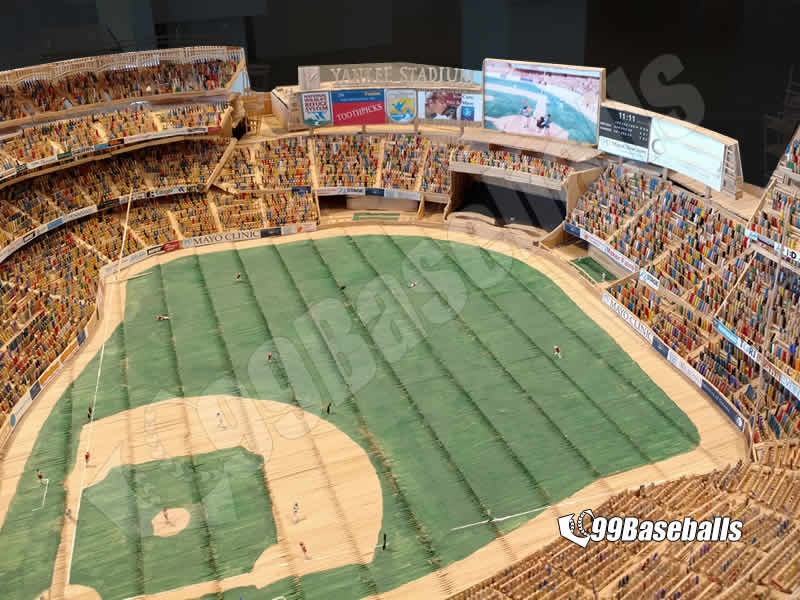
- Small Field is commonly defined as a 46/60 field (46 feet = pitching distance; 60 feet = base path)
- Medium Field is known as the 50/70 field (50 feet = pitching distance; 70 feet = base path)
- Big Field is referred to as a 60/90 field (60’6″ = pitching distance; 90 feet = base path)
You can interchangeably referred to each field size by their name or number (i.e. small field or 46 60)
Table of Contents
Baseball field layout, pitching mound, pitching rubber, pitching mound accessories, home plate dimensions, general baseball field dimensions per age group, baseball field dimensions per league / divisions, american amateur baseball congress (aabc), american legion, babe ruth / cal ripken, dixie league baseball field dimensions, little league baseball field dimensions, pony league baseball field dimensions, usssa league baseball field dimensions, high school, college, milb and mlb, softball field dimensions per age group, frequently asked questions, reference links, introduction.
From sandlots to 60×90 baseball fields, the memory of stepping on that dirt infield for the first time is something that kids (and parents) will remember forever.
With a smell of fresh cut grass in the air with dandelions popping up all over the place, nothing beats the first crack of a bat or shuffling noise of child running down the baseline or playing their very first night game under the lights.
The primary purpose of this post is to review baseball field dimensions and components and present you with an abbreviated field dimensions.
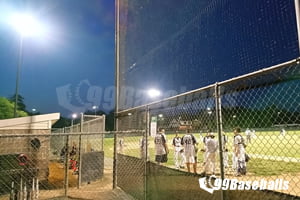
A baseball field, also commonly referred to as a ball field, ball park, sandlot or baseball diamond, is the field where baseball game is played.
The field is broadly broken down to infield and outfield where an infield contains the home plate, three bags (one bag for each base) and a pitcher’s mound
Who created the baseball diamond?
Initially created by Alexander Cartwright Jr. (1820-1892) of the NY Knickerbocker Baseball Club in 1945 (Cartwright also formalized the modern baseball rules), the shape of a baseball diamond has stayed remarkably the same, though there are some differences between fields used by youth baseball players.
Why is baseball field more commonly referred to as a baseball “diamond”?
The infield is technically a square rotated 45 degrees but from the prospective of an umpire, catcher or batter, the field does resemble a diamond shape.
Besides, referring a baseball field as a diamond probably garnered more interests from the folks who were just beginning to learn about baseball (i.e. “baseball square” sounds bit dorky).
Baseball field sizes are represented by two numbers?
When someone says, “Hey, is our big field available tonight” or “Is our 60 90 field available for practice tomorrow”, the field size they are referred to is:
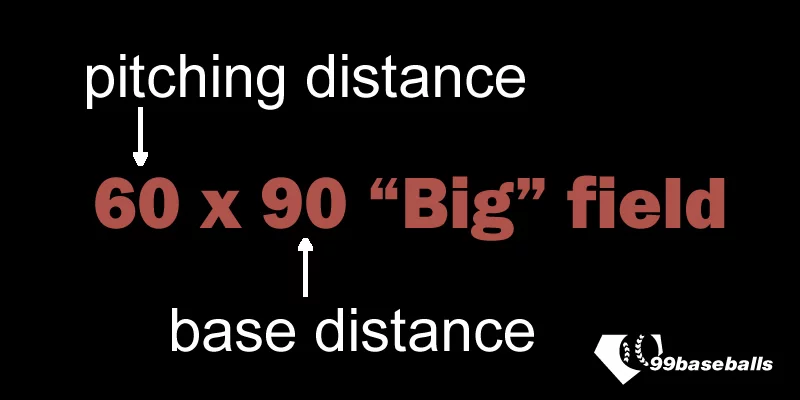
- The first number indicates the distance from pitching rubber to home plate is 60 ft 6 inches
- The second number indicates the distance between bases (home plate to first base or second to third or third to home) is 90 ft
^ Return to Top
A baseball fields is divided into two majors sections: infield and outfield.
For the most part, it does not matter if you are playing on a small field, medium field or big field, components that make up the infield does not change (other than size).
The only exception is the warning track which are usually found only on 60/90 fields.

Outfield consists of left, center and right fielder positions. Most 60×90 fields will also have a warning track which is used by outfielders to indicate how far they are from the fence (crunching sound gives an audible alert).
Although MLB has a set of minimum requirements, the overall shape of a baseball field can vary greatly. Just think of the Red Sox Fenway Park or Astro’s Minutemaid field with their green monster board and score walls, respectively.
The shape of a baseball outfield at the college, high school and younger leagues can get even more crazy.
Except in T-ball (where most games are played on a sandlot or similar ball fields), baseball fields will usually have most, if not all of the following components:
- Batter’s boxes (for right and left handed hitters)
- Catcher’s box
- Coach’s box – designated area for first base and third base coaches
- Distance between bases – Baseline (or base path) which is a straight line between two adjacent bases and/or home plate
- Dugouts – in most cases, the home team takes the dugout by the first base
- Foul Line – lines extend from both left and right batter’s box
- Home Plate – size is universal regardless of an age-specific field
- On-deck circle – non-professional leagues have a fenced in on-deck circles inside the dugout
- Pitching Mound – the overall dimension and slope varies between age groups
- Runner’s Lane or Running Lane is only marked between Home Plate and First Base; it is approximately 45 feet long (the last half)
Pitching mound, or pitcher’s mound, is a low artificial hill located in the middle between first and third base where a pitcher stands and throws his pitches.
In the Major League Baseball, this “hill” is 18 feet (5.5 m) in diameter, with the center 59 feet (18 m) from the rear point of home plate.
Six inches (15 cm) in front of the pitcher’s rubber, the mound begins to slop downward and the top of the rubber is to be no higher than ten inches (25 cm) above home plate.

A pitching mound in youth baseball is similar but not quite the same.
Instead of a 18 ft diameter, most youth fields have 16 ft diameter pitching mounds with a mound that is about 8 inches tall.
Because available fields for youth baseball and softball games are limited and dictated by location, most leagues publish facility guidelines to help local organizations develop their playing fields.
On a side note, be aware that pitching mound is notoriously difficult to maintain as it is the most heavily used part of the field after batter’s box so the height will vary greatly, especially during the latter part of a season.
Lastly, if your league plays both baseball and softball games on a same field (or maybe you are sharing a soccer turf field), you may see a portable pitcher’s mound that looks something like this:
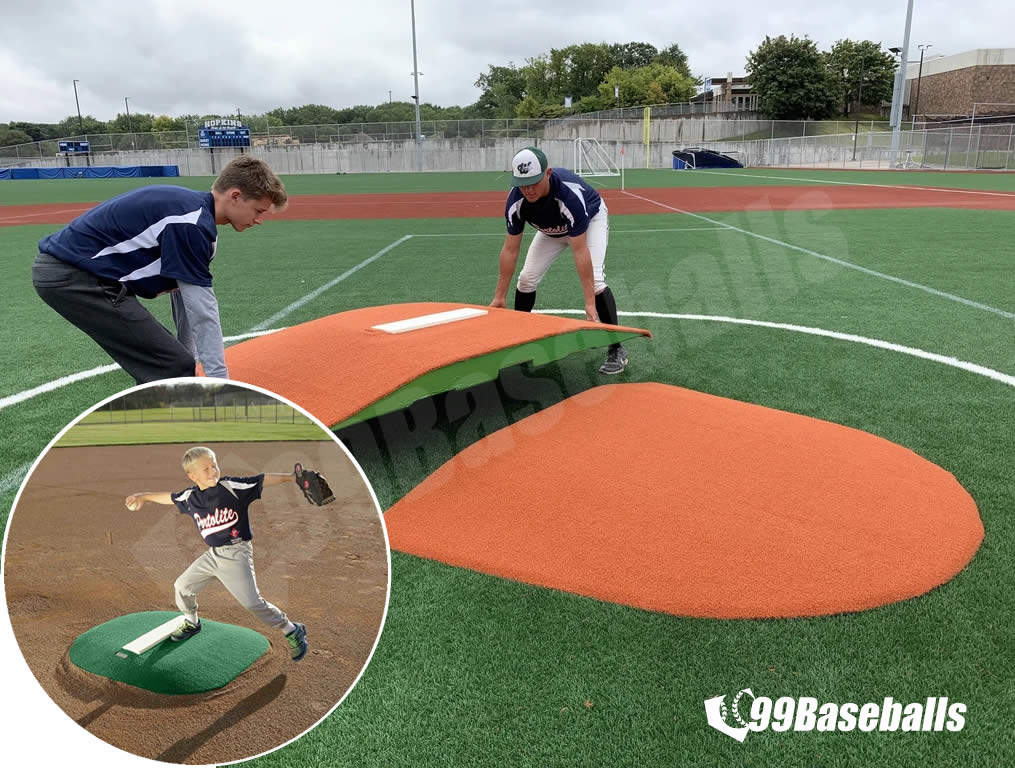
A removable (portable) mound is usually called a “turtle” where it is simply placed into place by several adults when needed.
Depending on your league, you may see a smaller version for younger players and larger (and very heavy) portable mounds for older players.
When kids reach 13u (a.k.a. 13 years old), they typically move onto a 60×90 baseball field with a permanent mound.
A pitching rubber (a.k.a. pitcher’s plate) is a flat rectangular slab made of whitened hard rubber (used to be made from wood) on top of the pitcher’s mound.
All baseball pitchers, regardless of the age, must touch this rubber while beginning his/her throwing motion.

Most pitchers work from the center of the rubber, using it to push off with their back foot to obtain additional velocity on their pitches.
Few pitchers work from the side of the rubber, however, maintaining contact with the side of their foot while starting their motion; this allows them to throw a pitch coming from an angle which is uncomfortable for the batter.
The rubber’s dimension is 24 inches (61 cm) by 6 inches (15.24 cm), according to section 1.07 of the MLB rules.
In Major Leeague Baseball, a pitching rubber is set so that its front edge is exactly 60 feet 6 inches from the rear point of home plate, and is elevated 10 inches above the rest of the playing field. The area surrounding the mound is flat.
A pitcher may keep a “rosin bag” on the rear of the mound to dry off his hands (rosin bag is a small canvas bag filled with rosin powder which consists of sticky substance extracted from the same of fir trees; rosin bag is used to pitchers to improve their grip on the baseball and keep their hands dry).

Although rare in youth baseball, all Major League Baseball teams are also permitted cleat cleaners on the back of the mound. This may be a flat grate-style plate, or simply a hand tool such as a piece of wood used to remove mud and dirt from cleats.
Both a rosin bag and clear cleaner are allowed to remain on the backside of the mound at the discretion of the umpire, thus reducing the probability that they will affect a live play.
According to MLB’s Official Baseball Rules, home base (or home plate) is marked by a five-sided slab of whitened rubber that is 17-inch (43.18 cm) square with two of the corners removed so that one edge is 17 inches long, two adjacent sides are 8.5 inches (21.59 cm) and the remaining two sides are 12 inches (30.48 cm) and set at an angle to make a point.

Unlike other parts of a baseball field, the home plate dimension is universal.
Interesting Facts about a Home Plate
- It is set in the ground with the point at the intersection of the lines extending from home base to first base and to third base; with the 17-inch edge facing the pitcher’s plate, and the two 12-inch edges coinciding with the first and third base lines.
- In order to reduce injury risk during sliding, the top edges of home base is beveled and the base is fixed in the ground level with the ground surface
- Three bases are 15″ square each that are 3 to 5 inches thick. These bases are designed to be “ripped” off to minimize injury, unless you are playing on an adjustable turf field.

If you overlook the age specific requirements per league, we can breakdown the age group into three distinct groups:
- Ages 3-9 : players in this age group usually share a 46×60 field with t-ball players using throwdown bases to shorten the base path
- Ages 10-12 : players in this age group use 50×70 field
- Ages 13+ : this is the year most middle-school aged kids start playing on a big field (60×90)
For more detailed information age-specific field sizes, please read Distance Between Bases – Baseline Measurements
If you want to know more about a particular league, read my post National Youth Baseball League Comparison post here.
Please keep in mind that most t-ball players hit off a tee, so the mound specification is not important.
As kids grown into 6u and 7u, most coaches will throw to their batters from about 25 feet away with their throwing knee down on the ground.
Roberto Clemente 7s (7u) and Roberto Clemente (8u) Divisions
- Baseline — 60 feet
- Home plate to second base — 85 feet
- Third base to First Base – 85 feet
- Home plate to front of pitching rubber — 40 feet
- Infield arc radius — N/A feet
- Home plate to backstop — N/A feet
- Foul lines — 140 feet (only if an outfield fence is used)
- Center field fence — 150 feet maximum (only if an outfield fence is used)
- Pitching Mound Diameter – N/A feet
- Pitching Mound Height – 4 inches
- Batter’s Box – 3 feet by 6 feet; 6 inches away from the home plate
Jackie Robinson (9u) and Willie Mays (10u) Divisions
- Baseline — 65 feet
- Home plate to second base — 92feet
- Third base to First Base – 92 feet
- Home plate to front of pitching rubber — 46 feet
- Foul lines — 175 feet max (only if an outfield fence is used)
- Center field fence — 225 feet (only if an outfield fence is used)
Gil Hodges (11u) and P ee Wee Reese (12u) Divisions
- Baseline — 70 feet
- Home plate to second base — 99 feet
- Third base to First Base – 99 feet
- Home plate to front of pitching rubber —50 feet 6 inches
- Foul lines — 200 feet to fence
- Center field fence — 260 feet maximum
- Pitching Mound Height – N/A inches
Nolan Ryan (13u) Division
- Baseline — 80 feet
- Home plate to second base — 113 feet
- Third base to First Base – 113 feet
- Home plate to front of pitching rubber —54 feet
- Home plate to backstop — N/A0 feet
- Foul lines — N/A feet to fence
- Center field fence — N/A feet
- Pitching Mound Diameter – 10 feet
- Pitching Mound Height – 8 inches
Sandy Koufax (14u) Division
- Baseline — 90 feet
- Home plate to second base — 127 feet 3 inches
- Third base to First Base – 127 feet 3 inches
- Home plate to front of pitching rubber — 60 feet 6 inches
- Infield arc radius — 95 feet
- Home plate to backstop — 60 feet
- Foul lines — 320 feet maximum (only if outfield fence is used)
- Center field fence— 380 feet maximum (only if outfield fence is used)
- Pitching Mound Diameter – 18 feet
- Pitching Mound Height – 10 inches
- Batter’s Box – 4 feet by 6 feet; 6 inches away from the home plate
Junior (13-17u) and Senior (18-19u) Leagues
T-ball (ages 3 through 5).
- Baseline — 40 feet (with throw-down (removable) bases
- Home plate to second base — 70 feet 6 inches
- Third base to First Base – 70 feet 6 inches
- Home plate to front of pitching rubber — N/A feet (hit off of a batting tee)
- Foul lines — N/A feet max
Farm A (6u) , Farm AA (7u) and Minors (8-9u)
Majors (11u-12u).
- Home plate to front of pitching rubber — 50 feet
- Center field fence — N/A feet maximum
Pony (13u), Seniors (14-15u) and Babe Ruth (16-18u)
- Home plate to front of pitching rubber — 60 feet
T-ball (Ages 3-4) and AA (5-8u) Divisions
- Baseline — 40 feet
- Home plate to second base — 56 feet
- Third base to First Base – 56 feet
Dixie Boys (13-14u), boys 15 and under, Pre-Majors (15-17u) and Majors (15-19u) Divisions
- Home plate to front of pitching rubber — 54 feet
- Foul lines — N/A feet (only if an outfield fence is used)
- Center field fence — 300 feet maximum (only if an outfield fence is used)
T-ball Division
- Baseline — N/A feet
- Home plate to second base —N/A feet
- Third base to First Base – N/A feet
- Home plate to front of pitching rubber —N/A feet
Minor League (7-8u) and Major League (9-11u) Divisions
- Home plate to second base — 84 feet 10 inches
- Third base to First Base – 84 feet 10 inches
- Foul lines — 200 feet minimum to fence
Intermediate 50/70 (12u) Division
Junior (13-15u) and senior (16-18u) divisions.
- Foul lines — 300 feet minimum
- Center field fence— N/A feet maximum
Foal (3 and 4 years old) and Shetland (5-6 year olds) Divisions
- Baseline — 50 feet
- Home plate to second base — 70 feet 8.5 inches
- Third base to First Base – 70 feet 8.5 inches
- Home plate to front of pitching rubber — 38 feet
- Foul lines — 125 feet recommended
- Center field fence— 200 feet feet recommended
- Pitching Mound Diameter – 9 feet
Pinto Division
- Third base to First Base – 84 inches 10 inches
- Foul lines — 150 feet recommended
Mustang Divisions
- Foul lines — 175 feet recommended
- Center field fence— 225 feet feet recommended
Bronco Division
- Foul lines — 225 feet recommended
- Center field fence— 275 feet feet recommended
Pony Division
- Home plate to second base — 113 feet 2 inches
- Third base to First Base – 113 feet 2 inches
- Foul lines — 265 feet recommended
- Center field fence— 315 feet feet recommended
- Pitching Mound Diameter – 15 feet
Colt, Palomino and Thorobred Divisions
- Foul lines — 300 feet recommended
- Center field fence— 350 feet feet recommended
4-6u Divisions
- Baseline — 55 feet
- Home plate to second base — 77 feet 7 inches
- Third base to First Base – 77 feet 7 inches
- Home plate to front of pitching rubber — N/A feet
- Foul lines — 140 feet recommended
- Center field fence — 175 feet recommended
7-8u Divisions
- Home plate to second base — 84 feet 6 inches
- Third base to First Base – 84 feet 6 inches
- Foul lines — 160 feet recommended
- Center field fence — 185 feet recommended
9-10u Divisions
- Home plate to second base — 91 feet 8 inches
- Third base to First Base – 91 feet 8 inches
- Foul lines — 180 feet recommended
- Center field fence — 210 feet recommended
11-12u Divisions
- Home plate to second base — 98 feet 9 inches
- Third base to First Base – 98 feet 9 inches
- Foul lines — 230 feet recommended
- Center field fence — 275 feet recommended
13u and 14u (54/80) Division
- Home plate to second base — 112 feet 10 inches
- Third base to First Base – 112 feet 10 inches
- Foul lines — 275 feet recommended
- Center field fence — 300 feet recommended
13u (60/90) Division
- Foul lines — 320 feet recommended
- Center field fence — 375 feet recommended
14u (57/85) Division
- Baseline — 85 feet
- Home plate to second base — 119 feet 11 inches
- Third base to First Base – 119 feet 11 inches
- Home plate to front of pitching rubber — 57 feet
14u (60/90) and Scholastic Divisions
- Home plate to backstop — 20 feet
- Infield arc radius — Varies
- Home plate to backstop — 20 feet minimum
- Foul lines — Varies (320 feet recommended)
- Center field fence — Varies (375 feet recommended)
Similar to baseball fields, the overall field dimensions are affected by the size of the actual location so many local leagues will adopt differing sizes:
- First/Second graders (PeeWee): 30 ft / 45 ft
- Third/Fourth/Fifth graders (Minors): 35 ft /60 ft
- Sixth/Seventh/Eighth graders (Majors): 40 ft /60 ft

What is the distance between 1st base and 3rd base ?
- The distance between first base and third base is 127 feet 3 3/8 inches. All measurements from home base are taken from the point where the first and third base lines intersect.
What if my field doesn’t have an outfield fence? –
- This is very common, especially for younger kids playing on smaller fields. Some leagues or towns may provide temporary baseball fences (it looks something like this – https://www.coversports.com/product-category/browse-by-product/portable-fencing/) but most leagues just play without the fence. For older kids (13u+), playing on a field without a fence means less chance of home runs
What is the distance from home plate to second base?
- The distance across the infield from the back tip of home plate to second base is 127 feet, 3 3/8 inches (which is identical to the distance between first and third base)
How far is the 12 year old pitching mound?
- In general, the distance between base paths on fields for 12-year-olds and below in baseball is 50 feet. In Little League softball, it’s 35 feet for minors, 40 feet for majors and 43 feet for senior league
What are the field dimensions for 13u baseball?
- Depends. For Cal Ripken, 13u teams play on a MLB sized field that is also called “big field” or 60×90 (60’6″ pitching distance, 90′ base path. In Little League, 13u teams play on an odd size lot (54×80) or 54′ pitching distance and 90′ base path. Other leagues mostly follow Cal Ripken format
What is a “skinned” infield?
- Skinned infield simply mean that the entire infield consists of dirt. Other infield options are grass or turf or other combinations
How far is it from 3rd base to 1st base?
- Because a baseball diamond is actually a square turned 45 degrees, the distance bteween 3rd base to 1st base is identical to the distance from home plate to second base; 127 feet 3 inches on a big field or 60×90 field
What are the dimensions of a MLB baseball field?
- A minimum distance of 325 feet between home plate and the nearest fence on the right and left foul lines
- A minimum distance of 400 feet between home plate and the center field fence
- Click here for the diagram from MLB.com
- Critiquing Every MLB Stadium! 2022 Ballparks
- Ranking MLB Stadiums WORST to FIRST (Ryan Lowe, YouTube)
- MLB – See the dimensions of every big league ballpark
- MLB Weird Areas inside Stadiums – Part 1
- MLB Weird Areas inside Stadiums – Part 2
- Critiquing All 30 MLB Stadiums – Secrets and Hidden Gems
- Jomboy – Weird High School Baseball Fields
- MLB – Why do all MLB ballparks have different dimensions?
- Weird Baseball Fields
- MLB – Field Dimensions
- MLB Blogs – Brief History of the Pitching Distance
- Clem’s Baseball Stadium List – http://www.andrewclem.com/Baseball/Stadium_lists.html
- Little League – Field Specifications
- Little League – How to Resize a LL field from 46/60 to 50/70 Major Division (external link to Little League)
- Beacon Athletics – Dynamic Field Specification Generator
- PONY League – Field Dimensions
- Turface Athletics – How To Layout a Baseball Field
- Turface Athletics – Baseball and Sofbtall Field Layouts and Dimensions
- USSSA – League Field Dimensions (PDF, external link)
- Top 10 WORST/Weirdest MLB Stadiums of All Time
Kane Holland
Wednesday 18th of May 2022
Between pinto and little league baselines stay the same but the distance between home and second changes by 15’. Is it not square anymore or am I missing something?
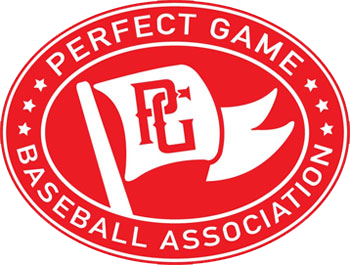
Updated 8/7/2024 Coaches,
Be sure you are aware of all rules and rule changes. Perfect Game reserves the right to amend these rules at any time for specific tournament play. National High School Federation Baseball Rules will be enforced with the following exceptions.
If there is a contradiction with language found in any printed copy of this addendum and the version most recently updated online, the online version shall supersede.
- 8u Machine Pitch Specific Rules
- 8u Kid Pitch Specific Rules
- 7-8u Coach Pitch Specific Rules
1. Youth Bat Specifications:
Penalties for illegal bats will be assessed as per the NFHS rule book. 1st violation - Batter is pronounced out (if discovered before a pitch to next batter) & head coach is restricted to the dugout for the remainder of the game. 2nd violation (Same Game) - Batter is pronounced out (if discovered before a pitch to next batter) and head coach is ejected. Subsequent violations: batter is pronounced out (if discovered before a pitch to next batter) and head coach is ejected. When a batter is pronounced out for violation of bat rules, the defense may take the penalty or result of the play. The head coach penalties apply in either case.
Red flag events will follow the following rules however event directors reserve the right to modify rules as needed in the best interest of the event. Directors will always rule in the fairest possible way. For White or Blue flag events please check the bat restrictions tab per event.
The following are the only wood composite bats allowed:
- 5150 Composite Pro Wood WC5150
- Big Stick R243CH
- Big Stick R243CS
- VELO Composite Wood R110CV
- VELO Composite Wood R110CH
- VELO Composite Wood R110CR
- VELO Composite Wood Y151CV
- Rawlings Composite 243MBS
- Rawlings Composite 243CUS
- Rawlings Composite 110CMB
- Rawlings CompositeY151CB
- Rawlings Maple/Bamboo Composite 271 MBC
- Rawlings Maple/Bamboo Composite SL151G
- AAA Pro Maple Baum Bat (Gold & White editions)
- AAA Pro Ash Baum Bat (Gold & White editions)
- Models: D243, D271, I13, D110
- AP5 Hybrid Pro Model
Pinnacle Sports/BamBooBat
- All models allowed
Safety and integrity of the game are two major factors at Perfect Game events, and with the implementation of the following changes, we are taking the next steps in providing an updated and premier experience on the baseball field. While these bats are currently still certified by their manufacturers, performance of these bats over the extended life span continues to become increasingly unsafe for our participants.
Effective January 1, 2021 , the following bats may not be used in Perfect Game events:
Updated 4/8/2024
- 2015 Demarini CF7 (-5)
- 2015 Easton XL1 (-5)
- 2016 Demarini CF8 (-5)
- 2016 Demarini CF8 (-8)
- 2016 Demarini CF8 (-10)
- 2017 Demarini CF Zen Balanced (-8)**
- 2017 Demarini CF Zen SL 2 3/4" (-10)**
- 2017 Demarini CF Zen Zero Dark 2 3/4" (-10)**
- 2017 Demarini CF Zen - Balanced (-5)
- 2017 Demarini CF Insane - Endloaded (-5)
- Louisville Slugger Blue Meta Composite (33/30 model only)
- 2018 Dirty South Kamo BB KA 8 (30/22, 31/21, 32/22, 31/23, 32/24 only)
- (Easton) Ghost X (30/20 only - USA Baseball Marked)
- 2022 Stinger Missile 2 - (33/30 model only)
**Re-tooled models of these bats may be used in Perfect Game play. Once returned from the manufacturer, these bats will have updated model numbers and new orange end cap and stickers indicating the corrected performance standards. Additionally, for further clarity, Perfect Game has lifted its previous ban of the Easton Hype Fire -5 bat and, effective August 15th, 2024 all years and models will be approved for Perfect Game play outside of a 12U event.
ALTERED BATS:
DEFINITION OF AN ALTERED BAT
“A bat which has been subjected to change in its physical makeup outside the original manufacturers product”
At any point, a Perfect Game Director or UIC may request to inspect a bat that is at a Perfect Game sanctioned event. If the owner/user refuses to allow the requesting body to inspect the bat the owner/user accepts an automatic three-year suspension from Perfect Game sanctioned events. Alternatively, the owner/user can allow the bat to be inspected so a conclusion can be formed as to whether the bat was altered.
The owner/user of the bat have the responsibility of having knowledge whether a bat is altered.
DAMAGED, WORN, OR ILLEGAL SUBSTANCE ON BATS:
Bats that are damaged in any way, including but not limited to cracked, warped, missing a knob/cap, having a rattle, etc. are not legal for Perfect Game sanctioned events.
Bats may not have any certifying markings or graphics worn off the bat. Bats that have certifying or identifying markings worn off the bat shall be removed from play.
No substance shall be added to the bat barrel. The barrel of the bat and all identifying marks or graphics shall be free of any foreign obstruction. If a foreign substance is discovered as being used or identifying marks on the bat are not visible the bat shall be removed from play.
2. Youth Pitching Regulations:
Balk Rule The MLB balk rule will be enforced. When a balk is called it is NOT a dead ball. A called balk will remain a LIVE ball. The balk is not considered an automatic dead ball.
The fake to third and throw to first play remains LEGAL for PG Youth events. Also, in the windup position, a pitcher is permitted to have his “free” foot on the rubber, in front of the rubber, behind the rubber, or off to the side of the rubber.
Daily Limits
- 7U-8U: Daily max is 15 outs OR 50 pitches.
- 9U-10U: Daily max is 18 outs OR 75 pitches.
- 11U-12U: Daily max is 18 outs OR 85 pitches.
- 13U-14U: Daily max is 21 outs OR 95 pitches.
The pitcher may finish the batter upon reaching the daily pitch count limit. I.E. A 13U pitcher begins the batter at 94 pitches he may finish the current hitter then must be removed from the game.
- 7U-14U: Each Player is allowed 24 outs over a 3-day period.
- If a player records more than 9 outs in a day, they are required 2 days rest.
- 100 Pitch maximum over 2, 3 or 4 day events
- 140 Pitch maximum over 5+ day events
- Players can pitch in more than one game in a day if they do not exceed daily limits.
Once a player has been removed from pitching they may not return to the mound in the same game. No pitcher shall appear in a game as a pitcher for three consecutive days, regardless of pitch counts. No pitcher shall appear in three games in the same day, regardless of pitch counts. The definition to be utilized for the purpose of the pitching restrictions for end of a day shall be any time of night or day that the facility is closed and teams have a break in playing prior to the next days games.
Pitchers who record outs or pitch in a game that is forfeited will still have those outs/pitches counted toward their limitations. Directors have the right to amend their own events pitching rules and go to PitchSmart at the 13U and 14U age groups if they so choose. Please view the Pitching Report on the event page to see what pitching rules are being for events. If PitchSmart is used, Pitch Limits listed above will be void, and teams will be asked to follow PitchSmart report page.
3. Pitching Violations:
The pitcher must be replaced on the mound immediately upon notice of a violation, not a forfeit.
4. Game Procedure:
Field dimensions.
- 8U: All games will be played on 40x60 fields.
- 9U-10U: All games will be played on 46x65 fields.
- 11U-12U: All games will be played on 50x70 fields.
- 13U: Games will be be played on 54x80 or 60x90 as specified per event
- 14U: All Core events (Red Flag) will be played on 60x90
TEAMS DEPARTING BEFORE THE END OF THE TOURNAMENT WILL NOT BE ALLOWED TO COMPETE IN THE PLAYOFFS!
If this happens, the second-place team out of the pool or the next best team. The Tournament Director will rule in the fairest possible way.
- Game times may vary by state or region. Directors reserve the right to adjust game lengths to benefit the event. Directors will rule in the fairest way possible.
- 13-14u Games are 1 hour 50 minutes
- 8-12u Games are 1 hour 40 minutes
- 6-7u Games are 70 minutes.
- No inning can start after the time limit.
- Time will be kept by the PG Field Director.
- For each team’s pool games the home team will be predetermined.
- A tie is equal to a ½ win and ½ loss for each team.
Championship Round/Playoffs:
- Applicable to Red Events only: No two teams from the same organization will match-up in their first playoff game unless the game is affected by a bye (Applicable to brackets with 9+ teams).
- Championship Games are no Time Limit if time allows.
- The home team in Championship Play will be the higher seed except when there is no seeding. When there is no seeding, the home team will be determined by a coin flip. This is the case even if the schedule says otherwise.
GEORGIA SUNDAY SERIES EVENTS - Time limits apply for all games, including Championships. Games will go directly into tiebreaker if time limit or regular innings have been concluded. Extra Innings
- Texas Tie Breaker, last 3 hitters on base with 1 out.
- Balk is the MLB ruling (NOT a dead ball)
- Last hitter from previous inning @ 1st Base
- Hitter before him in the lineup @ 2nd Base
- Hitter before that in the lineup @ 3rd Base
- Normal substitution rules apply to these runners.
- The hitting team will start the inning with one out.
- Play continues until one team is ahead at the end of an inning.
Championship games will be played with regular extra innings through the time limit. If time has expired, the last three hitters from previous inning will load the base with 1 out.
Championship games will be played with regular extra innings through the 9th inning. Starting in the 10th inning the last three hitters from the previous inning will load the bases with 1 out.
5. Forfeits:
A team should do everything within their power to start the game with 9 eligible players. Should a team not be able to begin with 9 players a game may begin with 8 players with the 9 th lineup spot being an automatic out. A game can be finished with 8 players. If there are no eligible subs the player leaving the original lineup will be recorded as an out until he is able to return. Any intentional forfeit could result in the forfeiting team being eliminated from the tournament. The tournament committee will rule on all forfeits. No team should benefit from the result of a forfeit in an unfair manner. This rule could result in a dispute and the tournament committee reserves the right to look at and rule in the fairest possible way. The committee’s decision will be final! A forfeit score will be the average runs scored for the winning team to 0 for the losing team. Only the Head Director can call a forfeit.
6. Taking Infield:
No infield will be allowed during the tournaments.
7. Mercy Rules:
8. equipment:.
Metal cleats cannot be worn for divisions 12U and younger. Metal spikes may be worn in divisions 13U and older.
Any player catching must wear all necessary protective gear including a catcher’s helmet with a facemask, throat guard (separately attached or built in), chest protector, chin/leg guards, and an athletic supporter. Note: Players in 12U and younger divisions must wear a catcher’s helmet that fully covers both ears. Electronic Communication Devices : Adoption of NCAA Pitchcom Protocols - The use of exclusively one-way electronic communication devices that transmit pre-recorded message(s) or signals for the purpose of relaying the pitch or play call from the dugout to the field (to the pitcher or other defensive or offensive players) is permitted. The use of an in-ear communication device with direct or live audio remains restricted to the defensive position of catcher.
9. Trips to the mound:
The members of the coaching staff (including the manager) can make one mound visit per pitcher per inning without needing to remove the pitcher from the game. If the same pitcher is visited twice in one inning, the pitcher must be removed from the mound.
10. Lineups:
Hitting lineup:.
- You may bat 9,10,11 players or bat your entire roster.
- You must declare at the start of the game, and once the first pitch has been thrown the lineup is locked, and the number of batters may not be changed.
- May start game with 8 players, 9th player spot is an out when he comes up in lineup.
- The 10th and 11th hitter if used will be designated as an EH and XH on the lineup card.
- The EH and XH may bat at any spot in the order.
- The EH and XH is the same as any position on the field as far as substitutions are concerned.
- The starting pitcher is allowed to DH for himself and bat in any slot in the order but must be listed a P/DH on the lineup card.
Roster Batting Rules
- Batter : If a batter cannot fulfill his time at bat due to injury or illness, that player will be eliminated from that entire game. His spot in the batting order will be an automatic out each time.
- Runner : If a runner cannot continue his time on the bases, that player will be substituted under the Courtesy Runner rule for Roster Batting. He will not be allowed to participate in the remainder of the game. His spot will be an automatic out.
- A player ejected while roster batting will result in the team losing that player for the entire game. His spot in the batting order WILL BE AN AUTOMATIC OUT EACH TIME.
- The Courtesy Runner shall be the player making the last batted out.
11. In Case of Rain:
All rain out games may not be made up depending on time constraints. In case of scheduling changes, it is the team’s responsibility, not the tournament committee, to make sure they are aware of the new schedule or any scheduling changes. This information will be posted on the tournament web site when it becomes available. Note: No special requests will be honored if rescheduling becomes necessary. Tournament format is subject to change at any time if deemed necessary and will be determined based on the fairest outcome for all teams. All coaches should make sure the tournament committee has current contact info. If games are cancelled, pool winners and championship qualification will be determined by the tie breaking procedures (listed below).
12. Stop in Play:
If a game is stopped, the game must start within 1 hour of the stop in play. If games are not resumed, they will become suspended or called official. Games called by umpires that cannot be resumed within 1 hour will be considered an official game, if 4 innings have been completed, or 3 1/2 innings if the home team is ahead (13U-14U: after 5 innings or 4 1/2 if the home team is ahead). After 4 complete innings, a tie score will be recorded a tie in pool play. The tournament director can extend the 1 hour if there are extenuating circumstances, i.e. lightning detector, working on fields, etc. A suspended game will resume where the game was halted. In the event play is stopped for any reason before or during the Championship round, first place, second place, third place, etc. will be awarded based on PG Seeding and Tie Breaker Rules.
13. Protests:
Judgment calls are not eligible for protest. Protests for pitching limitations are permissible for non-DiamondKast events only. Protests will be heard and ruled on by a tournament committee. The team protesting must make cash payment of $100 at the time of the protest. If the protest is ruled in the protesting team’s favor the $100 will be refunded. The ruling made by the committee will be final. Protests must be filed and ruled on before the next pitch if during game, or before umpires leave field if after a game.
14. Roster and Roster changes:
All players must be listed on the official roster prior to the teams first scheduled game. If a player is listed on more than one roster, the player listed will make a decision as to which roster, he is legally on. This decision is up to the individual player. No player can appear in a tournament game for more than one team, including separate age groups. Once the player has appeared in a game, the player may NOT participate with another team in the same weekend, regardless of age division or classification. This INCLUDES separate PG tournaments
- The team’s manager is responsible for all aspects of the eligibility of the players on his team and that they meet the requirements.
- A player who is in violation of the age eligibility shall be considered an illegal player.
- If anytime during a tournament game, a player is discovered illegal due to an age violation or participating on more than one team in ANY PG tournament in the same weekend, the team is subject to forfeit. The first team a player participates for is their official team. *This does not apply to Pitch Smart violations.
- Once an event (Age division that the player participated in) concludes, a player may go play for a different team in a different tournament, as long as the tournaments do not overlap. (Championship game of first tournament must be complete prior to first pitch of second tournament) This player will not be considered an illegal player since the events do not overlap.
- Participating players shall have photocopies of their original birth certificates (US) or passports (International) in the possession of their team manager. Electronic copies of ID documents are accepted. Failure to have a copy of a birth certificate, in the event of a protest, could result in suspension for the remainder of the event until such document can be produced for the team or individual. Driver’s License is permitted. For events classified by graduation year or grade level, transcripts/report card from a players most recent academic semester shall be in the possession of their team manager.
15. Scoring:
We recommend that all teams (home and visitor) keep a scorebook. The official scorebook and lineup card for the game will be kept by tournament staff, in case of emergency where staff cannot keep book the home team will be the official scorer. In a situation in which tournament staff and the home team are unable to score the visitor would become the official book. All subs should be reported to the umpires. To eliminate scoring disputes scorekeepers should check with the official scorer during and after the game.
- Lineup cards must be fully filled out with players first name, last name, position, and accurate jersey numbers. All substitutes should be listed with accurate jerseys numbers. Failure to produce a complete lineup card can result in games not starting on time. Lineup cards are to be given to the official scorekeeper before the home plate meeting.
16. Sportsmanship:
In the interest of maintaining a quality event, the tournament committee reserves the right to eject any person from the site for unruly or unsportsmanlike behavior. Such behavior shall include but not limited to:
- Physical attack on an umpire, tournament official, associate director, associate officer, and/or any player or fan prior, during, or immediately following a game played under the authority of Perfect Game. Assault on an official is a felony in some states.
- Players, coaches, managers, fans, spectators, or sponsors threatening an umpire, tournament official, associate director, or associate officer with physical harm.
- Any player, coach, manager, sponsor, fan, spectator, director, or officer who engages in physical fighting.
- Using unsportsmanlike conduct or abusive language, symbol tactics, or derogatory or unbecoming acts.
- Destruction of property or abuse or failure to pay.
- Competing under an assumed, false and/or altered name.
- Tournament hosts have the authority to eject a player, fans, or team anytime during a tournament of committing any of the above listed offenses.
- A player, spectator, fan or coach ejection carries removal from that game only.
- Any spectator, coach, manager, or player who is ejected for the second time during the tournament will be eliminated from participating for the remainder of the tournament.
- Any event that results in physical altercation (before, during or after a game) could result in a forfeit for both teams. Tournament committee reserves the right to remove teams from playoff contention.
- Any participant that is ejected by an umpire after a contest is completed must sit the next scheduled game. If it is the last game of the tournament the offender may be required to sit the first game of the next tournament that the team plays in.
17. Courtesy Runners:
Courtesy runners can be used for the Pitcher and Catcher at any time but must be a VALID SUBSTITUTE. In addition, the same substitute CANNOT run for more than one position (Pitcher or Catcher) in the same game. Additionally, if a team is batting their entire lineup, the courtesy runner will be the last batted out. If the last batter not on base is unavailable (i.e., he is the catcher or pitcher), the designated runner will roll back until such time as a possible substitute can be found.
18. Legal Slide:
A legal slide can be either feet first or head first. If a runner slides feet first, at least one leg and buttock shall be on the ground prior to contact with the fielder. If a runner slides head first, the runner’s arm/arms and torso must be on the ground prior to contact with the fielder.
19. Jumping Over A Fielder:
A runner leaving his feet to avoid a fielder that is either in possession of the ball or in the act of fielding is illegal. The ball is dead and the runner is called out. No runners may advance from the last base legally occupied at the time of the illegal act. The runner does not have to contact the fielder and the fielder does not have to control the ball for this to be considered an illegal act.
20. OFFICIALS:
Perfect Game shall utilize officials who are registered with Perfect Game and administer the contest in accordance with Perfect Game rules and expectations.
21. Seeding and Tie Breaker Rules:
- Pool play overall record (winning percentage)
- If two teams are tied -Head to Head winner
- If three teams are tied – If one team has defeated both other teams, that team advances. If not go to #4.
- Least total runs allowed in pool play.
- If still tied – Total runs scored in pool play
- If still tied – Total runs allowed subtracting game with most runs allowed in pool play
- If still tied – Total runs allowed minus two games with most runs allowed in pool play
- If still tied – Runs scored inning by inning starting with first game until one team has more runs after a complete inning starting with pool games
- Second place teams will always be taken ahead of 3rd place teams for wild cards, 3rd place ahead of 4th place, etc.
22. Not covered in the Rules:
In the event any item is not covered in these rules or NFHS rules, the tournament committee will make the fairest possible ruling and that ruling will be final!
8U Tournament Rules:
8U Kid-Pitch Tournament Rules
- No leadoffs
- No stealing home. A runner starting a play at 3rd base may ONLY advance home on a batted ball or when forced home by a walk, hit batter, or another force play (bases loaded).
- Walks are considered a "Dead Ball" situation, meaning the batter may only take 1st base and any forced runners may only advance one base.
- A runner starting from 1st or 2nd Base may advance home as a batted ball continuation of a play (there is not a mandatory ""red light"" at 3rd Base for a play in motion).
- A RUNNER STEALING FROM 2ND TO THIRD BASE MAY NOT ADVANCE TO HOME ON AN OVERTHROW BY THE CATCHER. HE MUST STAY AT 3RD BASE. Runner may leave base only after ball crosses plate: 1st Offense = Dead Ball / warning; 2nd Offense = Dead Ball / offending runner is called out, other runners return to previously occupied bases, no ball/strike charged to batter).
- Batter may not run on dropped 3rd strike.
- ONE Successful bunt per inning. No "butcher boy" allowed (Show bunt, pull back to swing).
- No infield fly rule.
- 7 run limit per inning, until the last inning (unlimited runs), which will be declared with less than 15 minutes on the clock at the start of the new inning. This will allow both teams to have a fair and even shot at getting unlimited runs in their last at bat.
Perfect Game Machine Pitch Specific Rules, Field Set Up and Guidelines
Field set up.
- Pitching Machine: The front leg shall be set at a distance with the FRONT LEG of forty-two (42) feet from the rear point of home plate. This will make the machine at 44 feet
- Recommended pitching machine speeds: 38 M.P.H. – 44 M.P.H.
- Bases: Bases will be set at 60 feet
- Safety Arc: There shall be a thirty (30) foot arc drawn from first (1st) baseline to third (3rd) baseline in front of home plate. Infielders must stay behind this line until the ball is hit.
Playing Rules
- Time limit for all games is 1 hour and 20 minutes. Time begins after the 1st pitch. Time limit could change in case of tournament interruptions. All teams should be prepared to start their game up to 10 minutes early in case we are ahead of schedule. (This will help the tournament keep on time)
- Run spreads for all games: 12 runs after 3 innings; 8 runs after 4 innings.
- Roster Batting will be required during the ENTIRE tournament. Regardless of the number of players you have.
- Teams may start and end a game with no less than 8 players. A team will take an out in the absent 9 th and 10 th position each time they are due at bat.
- For all Pool Play games- Home team will be determined by coin flip. In Bracket Play games, the higher seeded team will be home. In the event during bracket play that both teams are seeded the same, we will have coin flip. Dugouts are not assigned.
- Each batter will receive a max of six pitches or three swinging strikes. Pitches that are deemed unhittable by the umpire will not be counted. If a player fouls off the 6th pitch it will be recorded as an out.
- Team may score a maximum of seven (7) runs per inning, including the last inning or record three (3) outs.
- The infield fly rule and dropped third strike rule shall not be enforced.
- Teams may play with 10 players on defense, 4 outfielders. The outfielders must remain behind the baseline until the ball is put into play.
- Umpires shall call “Time” after every play and declare the ball dead. “Time” shall be called as soon as the lead runner is not attempting to advance. “Time” does not have to be called by the defense for the purpose of this rule. When a runner stands off a base and “jukes” or “fakes” back and forth, this is to be interpreted as “not attempting to advance” and “Time” shall be called.
- A player may only be Intentionally Walked once per game by announcement from the defensive team.
- No runner may leave base until the ball has been hit. Runners shall not lead-off or steal bases. A runner is out for leaving the base before the ball is hit or reaches home plate.
- Teams may bunt a maximum of two (2) times per inning. Fake bunts shall be prohibited. A batter that “shows” bunt is committed to an attempt to bunt or take the pitch. A batter who swings after showing bunt shall be called out and no runners may advance.
- A courtesy runner for catcher may be used. The courtesy runner shall be the player that made the previous out. If no outs have been recorded in the game, the courtesy runner shall be the previous batter not on base.
- When a batted ball hits the pitching machine, the ball is dead, the batter is awarded one base, with each runner advancing one base.
- The defensive player listed as the pitcher shall not leave the pitching circle until the ball is hit. First Offense: Warning--- Second Offense: Removal of the player from the pitching position for the remainder of the game
7U-8U Tournament Rules:
Perfect game coach pitch specific rules, field set up and guidelines, field set up.
- Fair Ball Arc: There shall be a twenty (20) foot arc drawn from first (1st) baseline to third (3rd) baseline in front of home plate. A batted ball must go past this line to be a fair ball.
- Pitching Circle: There shall be a ten (10) foot diameter circle with the front edge at forty-two (42) feet from the rear point of home plate.
- The pitching coach shall keep one foot on or straddle the pitcher’s line. The Coach can pitch anywhere in-between the 30’ Safety Arc and the 42’ Pitching Circle.
- The pitching coach shall not verbally or physically coach while in the pitching position
- The pitching coach shall position himself as not to be an obstruction to the defensive team on any possible play once the ball has been hit.
- Penalty: If a coach violates this rule after the ball is pitched, obstruction shall be called.
- Additional Penalty: If a coach violates this rule before the ball is pitched, First Offense: Warning; Second Offense: Removal of coach as the pitcher for the remainder of the game.
- Pitching Coach: The Pitching Coach shall be an adult at least eighteen (18) years of age.
- The catcher shall receive the pitch in the catcher’s box in a normal baseball manner. If in the Umpire’s judgment, the catcher is not receiving the ball in a normal baseball manner, there shall be a warning issued. If the act continues after the warning, the offending teams’ manager shall be ejected.
- Ten (10) defensive players shall play in the field with four (4) outfielders. The fourth (4th) outfielder shall not assume an infield position. All outfielders must remain in the outfield prior to the pitch being thrown.
- The defensive player listed as pitcher shall not leave the pitching circle until the ball is hit.
- Penalty: The play continues. After the play has ended, the offensive team has the option of taking the result of the play or no-pitch.
- Additional Penalty: First Offense: Warning; Second Offense: Removal of player from the pitching position for the remainder of the game.
- Defensive coaches shall not be allowed on the field of play and shall coach from the dugout.
- The Infield Fly Rule shall not be in effect at any time.
- The batting order shall constitute all present players on the team roster at the beginning of the game. Late arrivals shall be inserted at the bottom of the batting order. All players on the roster shall bat before returning to the top of the batting order.
- Teams may start a game with eight (8) players. The ninth (9th) & tenth (10th) positions in the batting order shall be declared an out each turn at bat.
- Approved Ruling: A ninth (9th) & tenth (10th) player and all subsequent players may be added to the bottom of the batting line-up as soon as they become available.
- Teams may use free substitution on defense, but the batting order shall remain the same.
- Bunting shall not be allowed.
- The batter shall receive a maximum of six (6) pitches or three (3) swinging strikes.
- Runners shall not lead-off or steal bases. A runner is out for leaving the base before the ball is hit or reaches home plate.
- A courtesy runner for catcher of record only the previous inning may be used. The courtesy runner shall be the player that made the previous out. If no outs have been recorded in the game, the courtesy runner shall be the previous batter not on base. If the team batting has not played defense yet and a courtesy runner is used for a player, the player that was run for must assume the catching position the next inning. This scenario only applies in the first inning for the visiting team.
- A team may score a maximum of seven (7) runs per inning.
- The game is over, when the opposing team is mathematically eliminated from scoring enough runs to win or tie the game. (Run Rules still apply)
- Umpires shall call “Time” after every play and declare the ball dead. “Time” shall be called as soon as all runners are not attempting to advance. “Time” does not have to be called by the defense for the purpose of this rule.
- Comment: When a runner stands off a base and “jukes” or “feints” back and forth, this is to be interpreted as “not attempting to advance” and “Time” shall be called.
- When a batted ball hits the Pitching Coach, the following shall apply:
- If in the Umpire’s judgment, the coach did not make a legitimate attempt to avoid contact, the batter is declared out and no runners shall advance.
- If in the Umpire’s judgment, the coach did make a legitimate attempt to avoid contact, the ball becomes dead and a no-pitch is declared.
Perfect Game and Perfect Game Baseball Affiliate (PGBA) tournaments and events will adhere to the following Youth Grad Year and Age Restrictions for the Fall 2024- Spring/Summer 2025 14U-18U Divisions No changes at this time for Fall 2024.
13U Division Players born on/after May 1, 2011 are eligible. ONLY TWO school grade exemptions per team will be allowed for players who are in the 7th grade who turn 14 years old before May 1st, 2024. However, those players must be born on/after January 1, 2011 to be eligible.
12U Division Players born on/after May 1, 2012 are eligible. ONLY TWO school grade exemptions per team will be allowed for players who are in the 6th grade who turn 13 years old before May 1st, 2024. However, those players must be born on/after January 1, 2012 to be eligible.
11U Division Players born on/after May 1, 2013 are eligible. ONLY TWO school grade exemptions per team will be allowed for players who are in the 5th grade who turn 12 years old before May 1st, 2024. However, those players must be born on/after January 1, 2013 to be eligible.
10U Division Players born on/after May 1, 2014 are eligible. ONLY TWO school grade exemptions per team will be allowed for players who are in the 4th grade who turn 11 years old before May 1st, 2024. However, those players must be born on/after January 1, 2014 to be eligible.
9U Division Players born on/after May 1, 2015 are eligible. ONLY TWO school grade exemptions per team will be allowed for players who are in the 3rd grade who turn 10 years old before May 1st, 2024. However, those players must be born on/after January 1, 2015 to be eligible.
8U Division Players born on/after May 1, 2016 are eligible. ONLY TWO school grade exemptions per team will be allowed for players who are in the 2nd grade who turn 9 years old before May 1st, 2024. However, those players must be born on/after January 1, 2016 to be eligible.
7U Division Players born on/after May 1, 2017 are eligible. ONLY TWO school grade exemptions per team will be allowed for players who are in the 1st grade who turn 8 years old before May 1st, 2024. However, those players must be born on/after January 1, 2017 to be eligible.
6U Division Players born on/after May 1, 2018 are eligible. ONLY TWO school grade exemptions per team will be allowed for players who are in Kindergarten who turn 7 years old before May 1st, 2024. However, those players must be born on/after January 1, 2018 to be eligible.


My Account - Register / Sign In
- RETURNING CUSTOMERS
- NEW CUSTOMER REGISTRATION
- WHY CREATE AN ACCOUNT
Welcome back!
To access your account, please enter your user name and password then click Sign In.
*Customer Information
*billing address.
Select a country / region… Canada United States (US) Update country / region
Shipping Information
*account information, why create an account.
Creating an account gives you access to all the best features of our site, including:
Order & Item History View your order status and tracking online from any computer.
Quotes Create your own quotes for upcoming meetings, easily stored in your online account.
Sales & Discounts Be among the first to hear about new products & discounted items.
Saved Lists Keep track of your favorite future items by storing in your Wishlist.
Address Book Quickly store and edit your personal shipping & billing addresses.
Manage E-Mail Preferences Choose which e-mails you wish to receive.
Convenience Shop from home at any time of the day.
Baseball Mound to Plate Distances for Each League
Mound-to-plate distances.

With all of the differing baseball leagues and associations, it’s important to know the standard distance between the baseball mound and home plate for each age group/league before hosting a home game.
Adhere to the following guidelines so players naturally learn how to pitch, throw, and bat on a field that mimics game day distances.
Official Major League Mound-to-Plate Dimensions
(Applies to International Baseball, Minor Leagues, Independent Leagues, College, High School, Babe Ruth, Big/Senior League, and most all other levels ages 14 and up)
- 60 feet, 6 inches
Little League Mound-to-Plate Dimensions
(Ages 13 and under; these also apply to Cal Ripken Majors and Dixie Youth Baseball)
PONY Mound-to-Plate Dimensions
PONY is a worldwide youth baseball organization with specific requirements for their seven age divisions:
Colt/Palomino Field Dimensions (ages 15-19)
Pony Field Dimensions (ages 13-14)
Bronco Field Dimensions (ages 11-12)
Mustang Field Dimensions (ages 9-10)
Pinto Field Dimensions (ages 7-8)
Shetland Field Dimensions (ages 4-6)
- N/A (coaches pitch or batting tee)
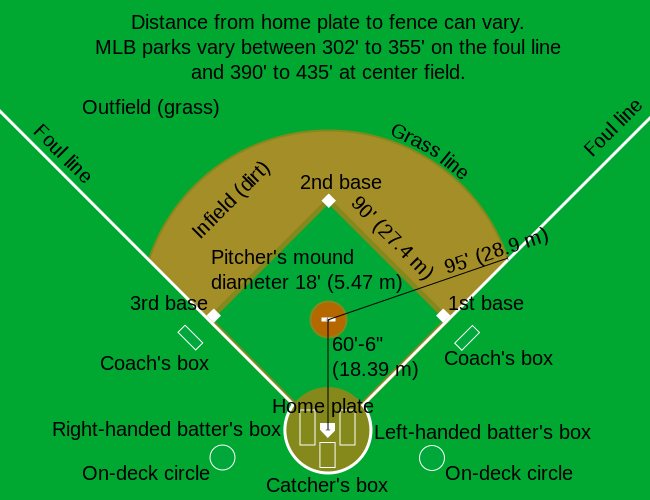
Why Baseball Mound-to-Plate Distances Matter
On the field.
We all know that practice makes perfect, but it’s hard to reach perfection when practicing on a field that isn’t like the others. Following the standard mound-to-plate distances is important so that players get a natural feel for the field. Equally, players learn from experience. When a hitter’s timing is off, practicing off a tee won’t help as much as swinging for a fastball thrown from 60 feet away.
Batting Cages
Just like on the field, players deserve the best environment to simulate live game conditions. If you operate a batting cage rental business, accommodate the players in your area with proper cage sizes , allowing for live game pitching and hitting practice. Shorter cages can cause hitters to lose their timing, so it’s key to always practice like you play.
Looking for other items to improve practice time? Shop our pitching machines , portable bleachers , and much more to get the best for your customers, teams, and spectators.
Contact Us with any questions or to start your custom order today.
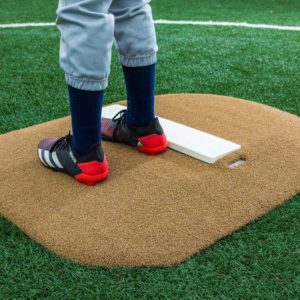
4″ Economy Youth Mound (4"H x 3’6”L x 2’10”W)
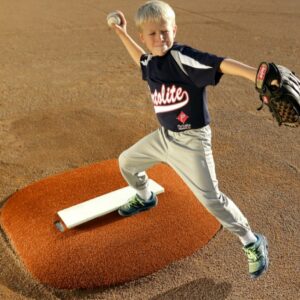
4″ Stride Off Game Mound (4"H x 4’L x 3’10”W)
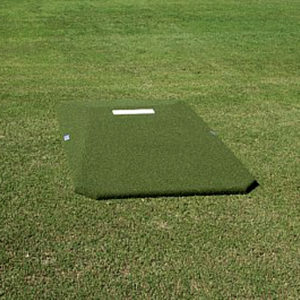
Classic Game Junior Mound (9’L x 5’4”W x 6”H and 135 pounds)
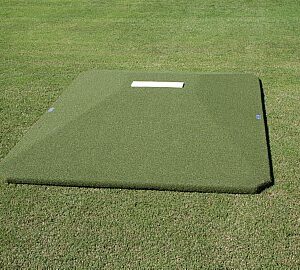
Game Mound (8'3"W x 11'6"L x 10"H and 220 pounds)
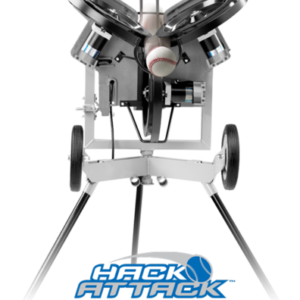
Hack Attack Baseball Pitching Machine (Optional Softball Conversion Kit available)
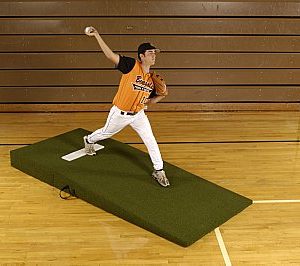
High School/Collegiate Mound (9’6”L x 4’W x 10”H and 130 pounds)
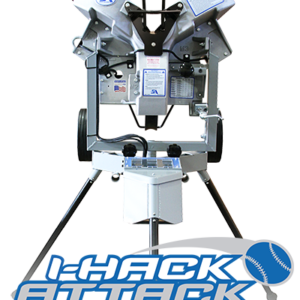
I-Hack Attack Pitching Machine
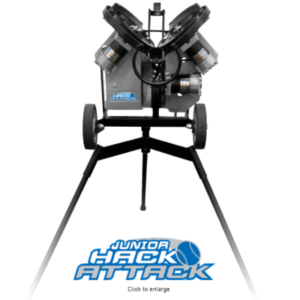
Junior Hack Attack Baseball Pitching Machine (Optional Softball Conversion Kit)
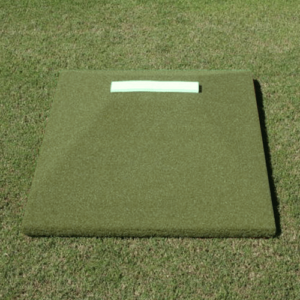
Junior Pro Mound (6" H x 3' 6" W x 6' L)
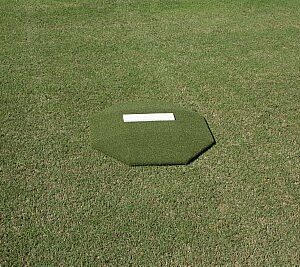
Junior Training Mound ( 42”L x 42”W x 4”H and 45 pounds )
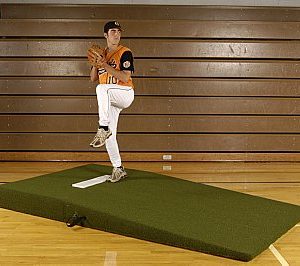
Professional Mound (9’6”L x 5’4”W x 10”H and 155 pounds)
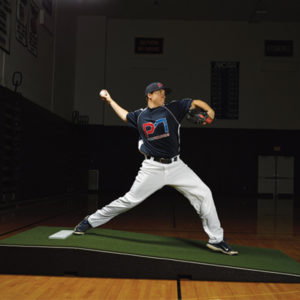
ProMounds Collegiate Practice Pitching Mound (9’ L x 4’ W x 10” - 126 pounds)
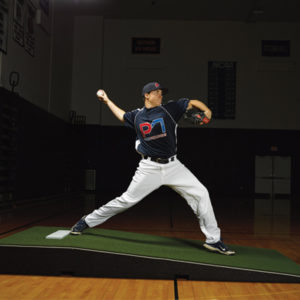
ProMounds ProModel Pitching Mound (9' L x 5' W x 10" H - 140 pounds)
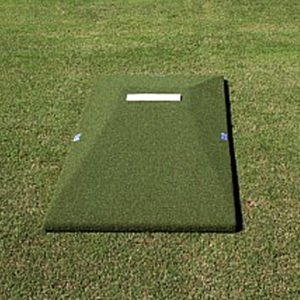
Proper Pitch Prep Mound (9’L x 4’W x 6”H and 100 pounds)
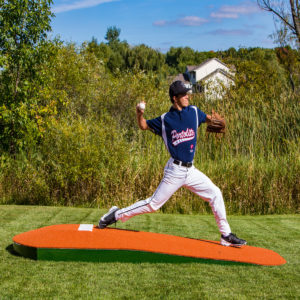
Standard One-Piece Practice Mounds (10"H x 10’6”L x 4’W)
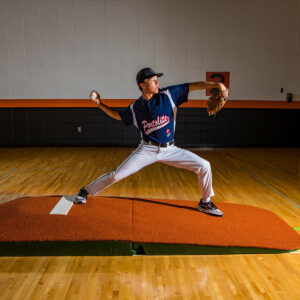
Standard Two-Piece Practice Mounds (10" H x 4' W x 8' 6" L)
Tom Schmidt
Our grandson is 9 years old. He plays in a youth league here on misdoula. He can throw a real fastball to me when we srebtossing. I would like to work with him when he comes over, toss at the pitching distancebgor his age group. What didtancenis that? I looked it up and I thought it was 56 feet. Thank you. Tom Schmidt missoula mt
Tom, thanks for reaching out. Distances vary, but for the 9 – 12 age group, you’re looking at about 46 – 50 ft.
Our community here may have some insight as well, but here’s some pitching guidelines from the MLB that I found: https://www.mlb.com/pitch-smart/pitching-guidelines/ages-9-12
Leave a Reply Cancel
Your email address will not be published. Required fields are marked *
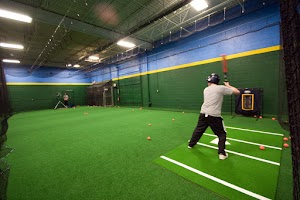

- 2024 CHARTERING
.png)
Major Division The most experienced level of Cal Ripken Baseball, recommended for 11 and 12 year old players. Cal Ripken Baseball is played under the Official Baseball Rules, but implements some special rules as necessary for the development and welfare of this young age group. Under the Major Division, there are two formats
Major/70 & Major/60 In both formats, games consist of six innings. In order to encourage the league to train more pitchers, there are rules that set the maximum number of innings a pitcher may pitch in a calendar week.
Major 70 Featuring a 50' pitching distance and 70' base paths, this division is offered as an option to the major division format, and includes a tournament trail from District competition through the World Series in Branson, MO at Ballparks of America featuring 8 International Champions.
Major 60 Features a 46' pitching distance and 60' base paths. Special base running rules are also in effect. This division is offered as an option to the major division format, and includes a tournament trail from District competition through the World Series.
Minor Recommended for ballplayers ages 9-10. Players build and refine their fundamental skills while beginning to understand game strategy and teamwork. In most regions, participants first experience post-season tournament competition in this level, leading to the 10 Year-Old World Series.
Rookie Designed primarily for ballplayers ages 7-8, this division makes use of a pitching machine to allow for more hittable balls at the plate and more action in the field. Fear of actually being hit by a pitched ball is diminished. It makes the game safer and improves the playing confidence and ability of all participants.
T-Ball Ballplayers ages 4-6 learn hitting and fielding fundamentals in a supportive team environment. Young athletes hit the ball from a batting tee which is height-adjusted for a level swing, batting in order through the line-up for the entire game. The primary goal is to begin to instruct young players in the fundamentals of baseball in a supportive team enviroment.
Chartering and Insurance Guide
Official Bat Rules
12U National Team
- Identification Events
- Seventeen USA Baseball Alumni Selected in First Round of 2024 MLB Draft
Seventeen USA Baseball alumni were selected in the first round of the MLB First-Year Player Draft on Sunday night in Arlington, Texas.
- 12U National Team Manager Bryan Madsen Discusses End of Training Camp, Plans Moving Forward
The 12U National Team Training Camp wrapped up in Cary, North Carolina with the final game of the Stars vs. Stripes series on Friday morning at Thomas Brooks Park. Training Camp is a special time for all players and families in attendance, but for Manager Bryan Madsen, it marked another checkbox in his tenured coaching career.
- Stars Even Series, 2-2, on Last Day of Training Camp with 6-0 Victory Over Stripes
The Stars evened up the series and downed the Stripes, 6-0, capping off the 12U National Team Training Camp and the Stars vs. Stripes series on Friday morning at Thomas Brooks Park.
- Stripes Top the Stars, 8-6, Behind Strong Effort at the Plate
Both teams in the Stars and Stripes had success swinging the bat in an offensive slugfest, seeing 23 total hits and a combined 14 runs in the third game of the Stars vs. Stripes series on Thursday afternoon at Thomas Brooks Park.
Wes Brooks Set to Make 12U National Team Coaching Debut
12U National Team Assistant Coach Wes Brooks talks about his experience with USA Baseball and his love for the sport
- USA Baseball Well-Represented During Major League Baseball All-Star Week
Major League Baseball’s annual All-Star Week concluded on Tuesday night with the American League recapturing the crown over the National League in the All-Star Game by a score of 5-3, the AL’s 10th win in the last 11 games.
Monday marked the beginning of the 2024 12U National Team Training Camp, held this year in Cary, North Carolina at Thomas Brooks Field.
Josh Ellison will make his return to the dugout with USA Baseball, coaching at the World Baseball Softball Confederation (WBSC) U-12 Baseball World Cup Americas Qualifier this summer in Tegucigalpa, Honduras. This time around, Ellison will be coaching in an environment previously unfamiliar to him.
Last year, USA Baseball’s 2023 12U National Team rolled through the competition at both the VII World Baseball Softball Confederation (WBSC) U-12 Baseball World Cup and the WBSC U-12 Baseball World Cup Americas Qualifier to claim two gold medal finishes.
USA Baseball alumni are all over the baseball landscape in 2024. Follow along throughout the season to keep track of some of the best performances among Team USA alumni across every level of the sport.
The road to a USA Baseball national team can take a variety of routes. Use the attached table to see which team(s) you are eligible for, and its corresponding selection event.
Representing Team USA as a coach or player is an experience unlike any other. It is an opportunity for some of the best in baseball to come together to pursue a common goal: to win gold on the international stage.
Relive the 2023 WBSC U-12 Baseball World Cup gold medal game, as Team USA took down Chinese Taipei to take home the world title.
Follow @USABaseball on Social!

12u Baseball Base Distance
Youth baseball is a thrilling sport, allowing children to develop their skills and passion for the game. One critical aspect of the game is the base distance, which varies according to the players’ age group. In this case, we’re focusing on 12u baseball.
12u baseball, specifically designed for children aged 11-12, features a base distance of 70 feet. This distance allows players to enjoy a challenging yet age-appropriate game, promoting their physical and mental growth in the process.
Curious about why this particular distance is chosen and how it impacts the gameplay? Dive into the rest of this article to uncover the reasoning behind it, and discover how it can enhance the overall experience for young players.
Understanding 12u Baseball Base Distance
In 12u baseball, the recommended base distance is 70 feet. This distance is measured from the back of one base to the back of the next base.
The 70-foot distance is an industry standard, recommended by both Little League Baseball and the Amateur Athletic Union (AAU) for the 12u age group.
Why Base Distance Matters
Safety concerns.
One of the primary reasons for having age-appropriate base distances is player safety. The shorter base distance in 12u baseball accommodates for the smaller size, reduced strength, and limited skill set of younger players. This helps prevent injuries caused by overexertion or collisions on the field.
Skill Development
Having age-appropriate base distances also plays a crucial role in skill development. A shorter base distance allows younger players to focus on fundamentals like hitting, pitching, and fielding without being overwhelmed by the physical demands of a larger field.
Base Distance in Other Age Groups
As players grow older and more skilled, the base distance increases to accommodate their development. Here’s a quick overview of the recommended base distances for various age groups:
- 8u: 60 feet
- 10u: 65 feet
- 12u: 70 feet
- 13-15u: 80-90 feet
- 16u and above: 90 feet (Major League Baseball regulation distance)
How to Measure the Base Distance
To measure the base distance accurately, start at the back of the home plate and use a measuring tape or a long string marked at the appropriate length.
Extend the measuring tool to the back of first base, ensuring it is taut and straight. Repeat this process for each base to confirm the correct distance.
Proper Field Maintenance for Youth Baseball
Ensuring a safe and well-maintained field is essential for youth baseball. Regular field maintenance includes:
- Mowing and watering the grass
- Raking and leveling the infield
- Checking and adjusting base distances as needed
- Inspecting the field for hazards like holes or debris
Transitioning to Longer Base Distances
As players age and progress through different levels of baseball, they will need to adapt to longer base distances. Coaches and parents can help facilitate this transition by:
- Gradually increasing practice distances
- Encouraging strength and agility training
- Providing guidance on proper throwing and running techniques
- Organizing scrimmages or exhibition games with longer base distances
Tips for Coaches and Parents
As coaches and parents, it’s essential to support young players during their development in baseball. Here are some tips to ensure they have a positive experience:
- Encourage teamwork and sportsmanship: Teach players the importance of working together and respecting their opponents.
- Focus on fundamentals: Emphasize proper technique and mechanics for hitting, pitching, and fielding.
- Provide positive reinforcement: Celebrate players’ successes and help them learn from their mistakes.
- Ensure proper equipment: Make sure players have the right gear for their age and skill level, including gloves, cleats, and protective gear.
- Be patient: Remember that each player develops at their own pace, and it’s essential to support them throughout the process.
Why do base distances vary for different age groups?
Base distances vary to accommodate the physical and skill development of players in different age groups. Shorter distances for younger players help ensure their safety and allow them to focus on learning the fundamentals of baseball.
How do I know if my child is ready for a longer base distance?
Players should transition to longer base distances as they grow and develop their skills. Coaches and parents can assess a player’s readiness by observing their performance during practices and games, taking into account factors such as throwing strength, running speed, and overall skill level.
Can I adjust the base distance on my child’s team if I feel it’s too short or long?
While it’s important to follow the recommended guidelines for base distances, you may discuss your concerns with the coach or league officials. They may consider adjustments based on the specific needs of the team or individual players.
In summary, the 70-foot base distance in 12u baseball provides the ideal balance between challenge and accessibility for 11-12-year-old players. It fosters skill development while ensuring that the game remains enjoyable and engaging for the young athletes.
As you navigate the world of youth baseball, remember that appropriate base distances contribute to the overall success and enjoyment of the sport. Keep this in mind when organizing or coaching games, and watch as your players grow into skilled, passionate athletes who love the game.
What is 11U Baseball?
I have a confession. I always assumed that the only youth baseball league in the United States was Little League. It turns out there’s a whole other set of youth teams outside of Little League that people can join. These leagues have curious names, like 9U, 10U, and 11U. There’s not a lot of information online about how these leagues work. I thought it would be helpful to gather some info in one place for people who are asking, what is 11U baseball?

11U baseball is a youth league where kids 11 years old and younger can play baseball. 11U baseball is governed through the United States Specialty Sports Association (USSSA), which is a separate organization from other youth baseball leagues, like Little League.
USSSA sets the league rules for the eligibility of players, how often players can pitch, the distances between bases, and how long a game can last. But it’s also possible for each 13u baseball league to set its own rules, just as long as those rules don’t override the USSSA.
Article Contents
Age and Eligibility Rules for 11U Baseball
Base distances and pitching distances for 11u baseball, 11u baseball games are 6 innings or 1 hour and 40 minutes, 11u baseball rules on rest days for pitchers, 11u players can steal once the pitch crosses home plate, can 11u players wear metal cleats, 11u baseball is different than little league.

One of the first things parents wonder about when searching for a baseball league is how old players need to be in order to participate. At first glance it sounds pretty straightforward – 11u baseball is for players who are 11 years old. But because all players have different dates of birth and some players might turn 12 while the season is in play, USSSA has some eligibility rules around what makes a player eligible for an 11U team. What age group is 11U?
11U baseball can be played by any player who is 11 years old, regardless of what grade they are in. If players turn 12 prior to May 1st, they are only eligible to play if they are in the 5th grade. Players who turn 13 before August 1st are not eligible for 11u baseball, regardless of their grade.
So if a player is either older or younger than 11, their eligibility for 11U baseball becomes more restricted. The general thinking is that it’s effective to keep all youth players on a team within the same one-year age increment. But some exceptions can be made.
This means that it’s possible for a 12-year-old player to play in 11U baseball. But they will only be eligible if they are in the 5th grade and they turned 12 before May 1st of the current year.
So what about players who are under 11 years old? What’s the youngest a player can be and still be eligible for an 11U baseball team?
According to the USSSA rules, players are allowed to “play up” two divisions. So any player who is eligible to play 9U baseball is eligible to play 11U baseball. So as a general rule, the youngest player on an 11U baseball team can be 9 years old.
A longtime director from the USSSA has said that, as long as you don’t roster a player that exceeds your age division, you may have players on the team that are younger than the age division, up to two years. This stance may differ from team to team, so it’s a good idea to check with your local 11U league about their age requirements.
Age eligibility is incredibly important for youth leagues like 11U. The penalties for age or grade violations are pretty steep. If a player is found to be at an illegal age during or after a league or tournament game, the offending team will automatically lose the game and/or be ejected from the tournament, while forfeiting all awards, points, and sponsors’ travel money.
Most of the players in 11U baseball are 11 years old, which means players are still learning how far they can throw and how fast they can run. Because of this, the distance between bases and the pitching distance is shorter than you would see in a high school, college, or pro baseball game.
How far are the bases in 11U baseball? In 11U baseball, bases are 70 feet apart. This is different from Little League distances for the same age range, which usually has the bases 60 feet apart for 11-year-olds.
What is the pitching distance for 11U baseball? In 11U baseball, the distance from the pitcher’s mound to home plate is 50 feet. This distance differs from Little League for the same age range, which usually has the pitching distance at 46 feet.
While the base distance and pitching distance are close when comparing 11-year-olds in Little League to 11U baseball, 11U baseball typically uses longer distances.
While a professional baseball game lasts about 9 innings and 3 hours , youth leagues spend less time on the field. How long is an 11U baseball game?
Most 11U baseball games last 6 innings or approximately 1 hour and 40 minutes, whichever comes first. It’s possible for an 11U baseball game to stretch past 1 hour and 40 minutes. But a new inning is not allowed to start after 1 hour and 40 minutes have been played.
For an 11U baseball game to end by the mercy rule , one team must be leading by 15 runs after 3 innings or leading by 8 runs after 4 innings.
For a game to be marked as completed due to weather, 3 innings must have been played. If the home team was winning after two and a half innings and the game is called due to weather, the home team will be declared the winner. This works similarly to how a home team does not have to bat in the bottom of the last inning if they are winning.
Learn more about the 9 reasons why baseball isn’t played in the rain .
Injuries are a regular issue for pitchers who spend a lot of time on the mound. A common occurrence in youth baseball is a UCL injury that’s sometimes known as “ Little League Elbow “. This is because young arms with weaker supporting muscles are especially vulnerable to impairments from repetitive motion. To help prevent these types of injuries, USSSA has rules in place for how often a pitcher can pitch and how many days of rest they need before they can pitch again. What are the USSSA pitching rules for 11U baseball?
For 11U baseball, pitchers are allowed to pitch the next day if they threw 3 or fewer innings. If an 11U pitcher throws more than 3 innings, they need one full day of rest before they can pitch again. In addition, an 11U pitcher is only allowed to throw a maximum of 8 innings in a 3-day window.
If a pitcher ends up pitching for 8 innings in that 3-day window, they need one full day of rest before they can pitch again.
An exciting play for a youth ballplayer is when they get to steal, but stealing in 11U baseball has rules that you won’t find in high school, college, or the pros. When can you steal in 11U baseball?
In 11U baseball, players are able to steal if their specific league allows stolen bases. When an 11U league allows stolen bases, which is most 11U leagues, players are only allowed to steal once the pitch crosses home plate.
Along with leading-off, the rules around stolen bases vary from league to league. It’s important to check the rulebook for the league to determine whether or not 11U players are allowed to steal bases, but a majority of 11U baseball leagues allow players to steal once the pitch crosses home plate.
Also, if the 11U baseball league is a coach-pitch or a machine-pitch league, stolen bases are never allowed.
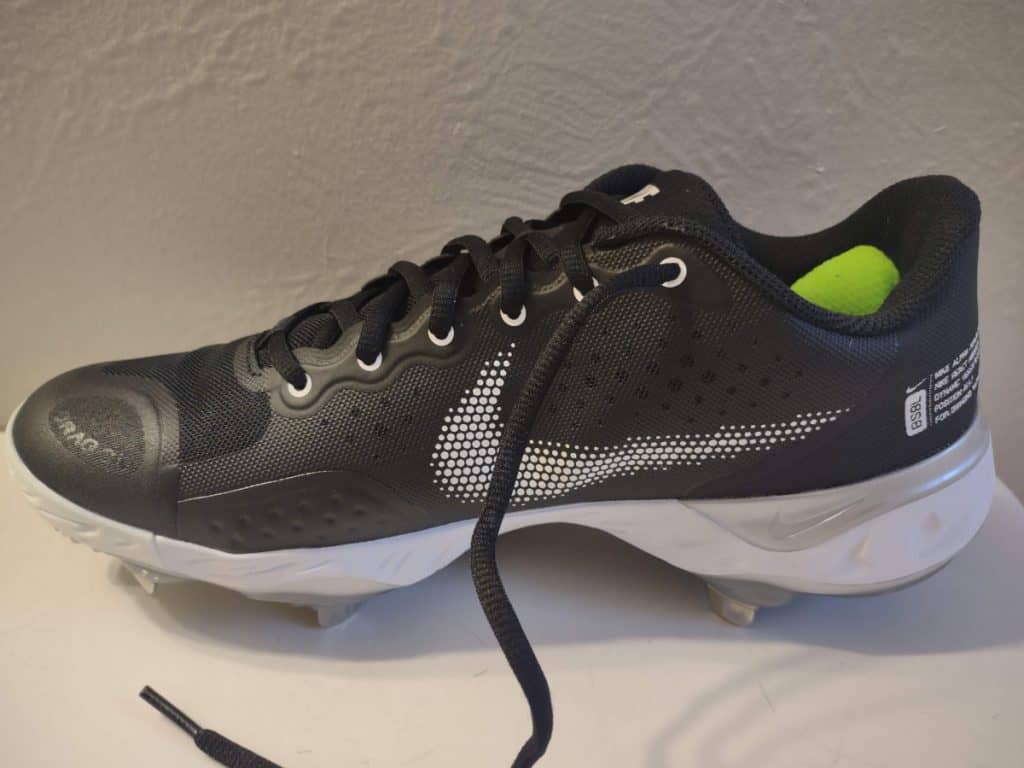
For youth baseball, there are more restrictions on how the game can be played, compared to the leagues for older players. This includes what equipment can actually be used on the field. Is there any equipment not permitted for 11U baseball?
In the official USSSA rules, 11U baseball players cannot wear traditional metal baseball spikes. They have to wear non-metal cleats. Spikes are only permitted for age divisions 13U and older.
What a lot of people don’t realize, is that 11U baseball is actually different from the divisions in Little League. There are a lot of different youth baseball leagues out there and it’s important to understand which one you want to play in.
In Little League, players who are 11 years old can play in either the “ Minor League ” division (ages 5-11) or the “ Major Division ” (ages 9-12). If an 11-year-old player wants to play on an 11U baseball team, they’ll need to go through a team that is associated with the United States Specialty Sports Association (USSSA) .
Little League allows for individual players to sign-up to play on a team, but USSSA only allows teams to register – not individuals. Both organizations have baseball leagues spread out all over the United States and both organizations allow parents to contact the baseball directors on their website. If a parent wants to register their 11-year-old for an 11U baseball team, they can always reach out to the baseball director in their area to inquire about baseball teams that are in need of players.
John Brandstetter
Huntington Beach’s Jared Grindlinger earns spot on USA Baseball 15U team
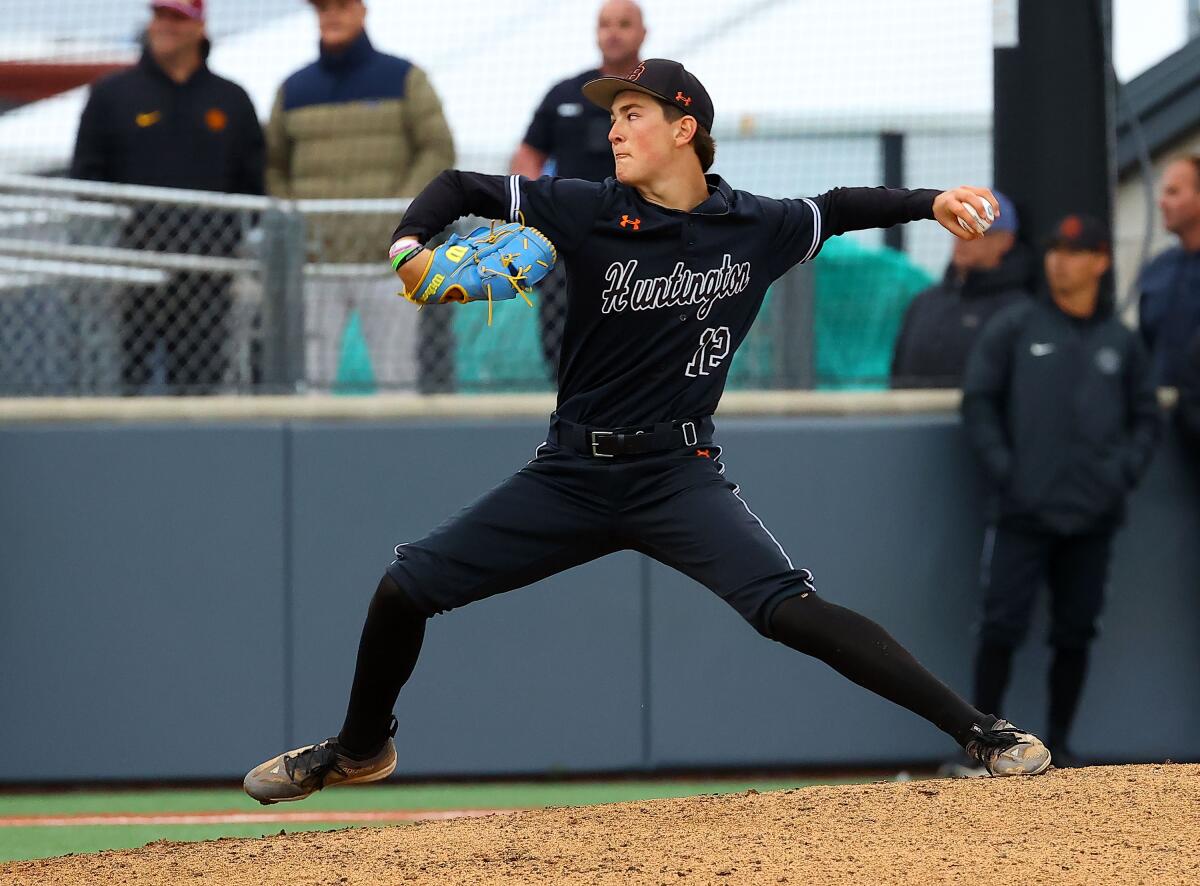
- Copy Link URL Copied!
Jared Grindlinger was shut down from pitching this summer.
It didn’t phase the teenager from Huntington Beach.
He made the USA Baseball 15-and-under national team roster as a hitter and outfielder.
“That was definitely the biggest challenge and probably the most exciting part about it,” said Grindlinger, an incoming sophomore at Huntington Beach High.
He was one of 20 from across the country selected for the team at the conclusion of training camp, held Aug. 4 through 9 at the USA Baseball National Training Complex in Cary, N.C.
The team will travel to the Atlanta area for a five-game international series with Australia in September.
Grindlinger joins his older brother, Trent, an incoming senior who plays catcher and was named to the 18U national team .
“It’s an unreal experience, knowing that both of us are on the USA team and that I’ll get to play with him next year,” Jared Grindlinger said. “To have my brother as another kid on the USA team is an honor. It’s definitely something special.”
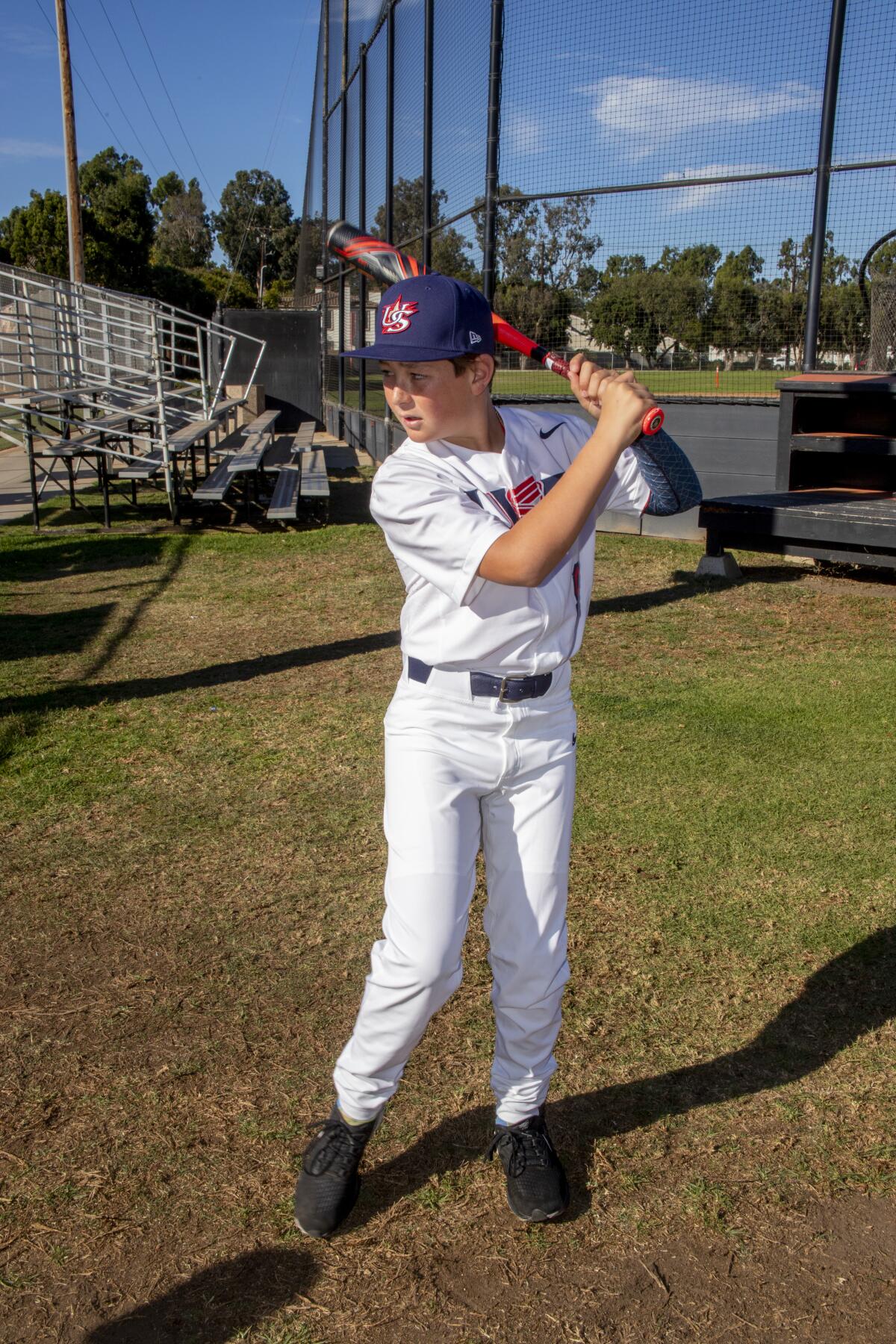
Jared’s talent is special too. He was previously named to the 12U national team in 2021.
A left-handed pitcher, he’s considered one of the top players in the class of 2027, and has already committed to Texas Christian University.
He is one of five players from California on the 15U national team. Orange Lutheran infielder Jordan Kurz is the other player from Orange County.
Grindlinger played for Huntington Beach High last spring as a freshman, striking out 21 batters in just 14 2/3 innings of work and finishing with a 4.30 earned-run average.
Jared said he’ll ramp up again as a pitcher before his sophomore high school season.
All the latest on Orange County from Orange County.
Get our free TimesOC newsletter.
You may occasionally receive promotional content from the Daily Pilot.

Matt Szabo is a sports reporter for the Daily Pilot. A Southern California native and Cal Poly San Luis Obispo graduate, he has been covering sports for L.A. Times Community News since 2006, most extensively water polo and tennis. (714) 966-4614
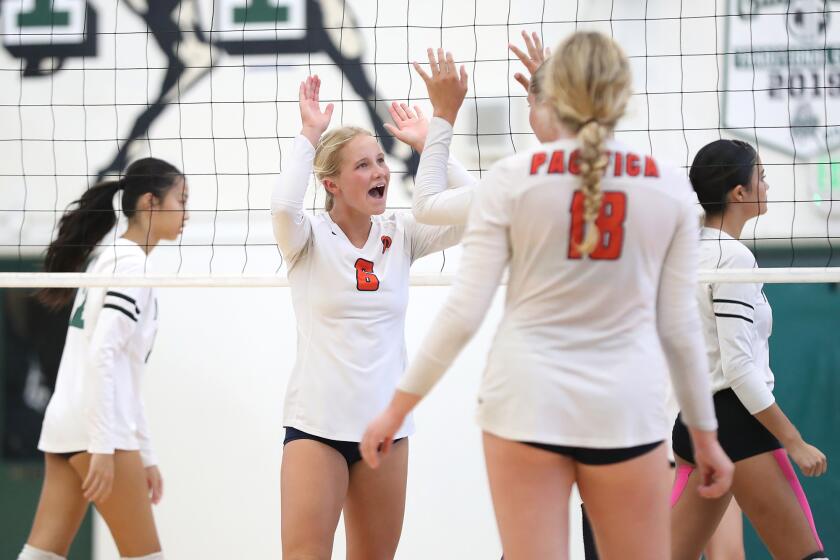
Pacifica Christian girls’ volleyball outlasts Costa Mesa
Aug. 16, 2024
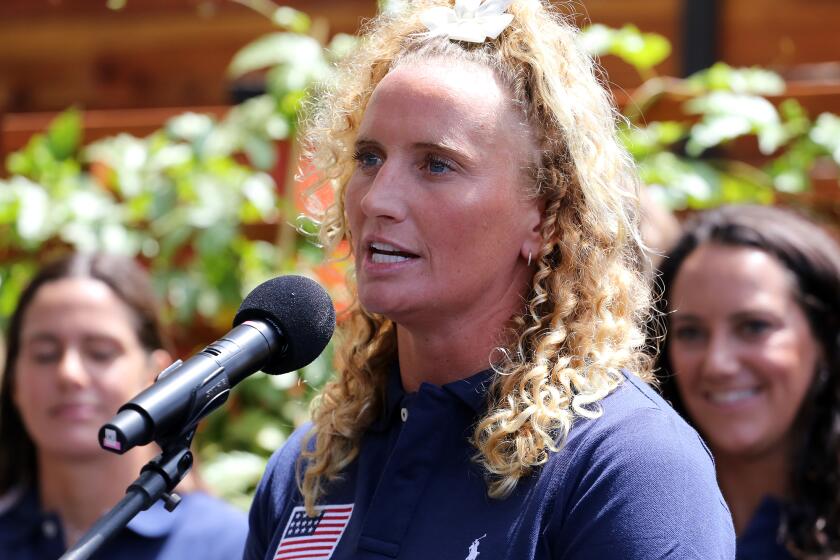
Newport Beach’s Kaleigh Gilchrist announces water polo retirement
Aug. 15, 2024
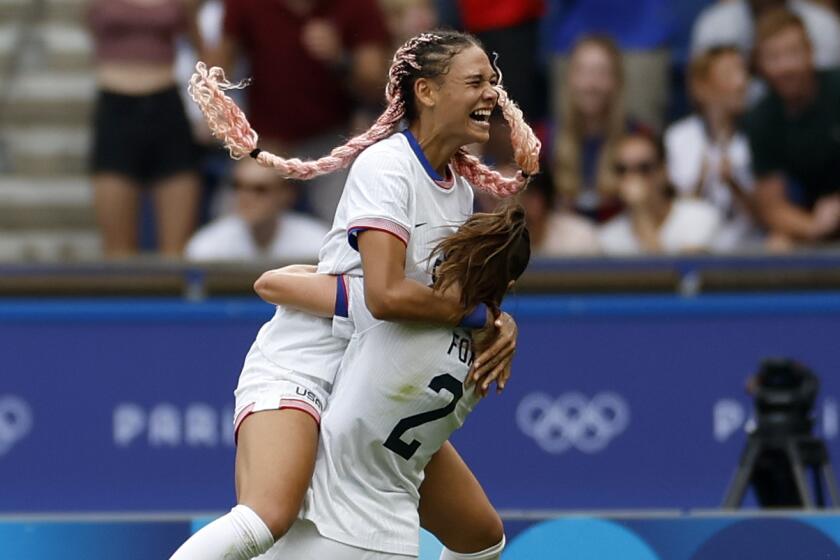
Trinity Rodman, Jenna Nighswonger help Team USA women’s soccer earn Olympic gold
Aug. 12, 2024

Alan Cleland, Sally Fitzgibbons win U.S. Open of Surfing titles

IMAGES
COMMENTS
Pitching Distance: USSSA. The baseball division of USSSA, ... 8U teams pitch from 40 feet, 10U teams pitch from 46 feet, and 12U teams pitch from 50 feet. It gets more complicated for 14U. USSSA baseball tournaments have three divisions of play for 13- to 14-year-olds, and the biggest difference is the field dimensions with pitching distances ...
RULE 12U Age (as of May 1) - exceptions must be cleared with relevant Baseball Commissioner 10-12 years old FIELD DIMENSIONS Base Distance 70 feet Pitching Distance 50 feet GAME RULES Game Length 6 innings; 4 innings required for complete game (home team up after 3.5 innings).
When training 12U players for pitching, it's important to take into account the different recommended pitching distances across leagues. Little League advises a distance of 46 feet, while USSSA suggests that pitches be thrown from 50 feet away. Meanwhile, MLB Pitch Smart proposes a variable range between 46 and 50 feet for this age group.
Base Paths: 70 feet. Pitching Distance: 50 feet. Junior Baseball (Ages 12-14): Base Paths: 90 feet. Pitching Distance: 60 feet, 6 inches. Senior Baseball (Ages 13-16): Base Paths: 90 feet. Pitching Distance: 60 feet, 6 inches. Field dimensions may vary based on the specific league or organization.
The pitching distance varies depending on baseball or softball and the age levels for each. Below we're going to cover pitching distances for 10u, 12u, high school, college, all the way to the professional leagues. Read on! Mound to Plate Pitching Dimensions What is the Major League Baseball Pitching Distance?
OFFICIAL BASEBALL NATIONAL BY-LAWS & RULES - USSSA
Pitch 9U 10U 11U 12U 13U/14U 16U/18U Base Distance 60' 60' 60' 70' 70' 90' 90' Pitching Distance 46' 46' 46 ... Pitching Disney youth Baseball tournaments do not have a limit on the number of innings a player may pitch in a day, but do encourage teams to use discretion with the safety of their pitchers. ...
The standard pitching distance for the 12-and-under (12U) age group significantly impacts the dynamics of youth baseball. Grasping the ins and outs of 12U pitching distance fosters an environment conducive to safety, skill development, and overall enjoyment for young players.
The distance from home plate to second base is crucial since this is the first distance set to create the baseball diamond. Third Base to First Base. Directly measured, the distance between third base and first base is approximately 127 feet, 3⅜ inches - the same as the distance from home plate to second base. Pitching Mound to Home Plate
The rubber-to-plate distance is measured from the rear of home plate to the front of the pitching rubber or coach's pitching plate. Table 1. Recommended playing field dimensions Age Division Mound Height Rubber-to- Plate Distance Base-to-Base Distance Recommended Fence Distance. 8U Kid Pitch 40' 60' 9U 46' 65' 10U 46' 65'
Official USSSA Baseball National By-Laws and RulesOfficial USSSA Baseball National By-Laws and Rules.
Pitching Restrictions Coaches are strongly advised to follow USA Baseball's Pitch Smart guidelines. See chart on page 9. Pitching Distances 10u: 60 feet base paths, 40 feet pitching distance 12u: Division A: 70 feet base paths, 50 feet pitching distance Division B: 60 feet base paths, 46 feet pitching distance
What are the field dimensions for 13u baseball? Depends. For Cal Ripken, 13u teams play on a MLB sized field that is also called "big field" or 60×90 (60'6″ pitching distance, 90′ base path. In Little League, 13u teams play on an odd size lot (54×80) or 54′ pitching distance and 90′ base path.
Also, in the windup position, a pitcher is permitted to have his "free" foot on the rubber, in front of the rubber, behind the rubber, or off to the side of the rubber. Daily Limits. 7U-8U: Daily max is 15 outs OR 50 pitches. 9U-10U: Daily max is 18 outs OR 75 pitches. 11U-12U: Daily max is 18 outs OR 85 pitches.
48 feet. Mustang Field Dimensions (ages 9-10) 44 feet. Pinto Field Dimensions (ages 7-8) 38 feet. Shetland Field Dimensions (ages 4-6) N/A (coaches pitch or batting tee) Typical MLB Baseball Field Dimensions (source: Wikipedia) Why Baseball Mound-to-Plate Distances Matter.
The Field: The distance from the pitcher's rubber to the back edge of home plate is 50'. The distance between the outer edges of each base is 70'. The Bat: The maximum bat diameter allowed is 2 3/4". The max difference will be -12 Protective Cup: All male players playing the catcher position are required to wear a protective cup.
Chartering and Insurance Guide. Official Bat Rules. Cal Ripken Baseball, A Division of the Babe Ruth League is not affiliated with Ripken Baseball, Inc. If your inquiry is related to the Camps and Tournaments of Ripken Baseball, please contact their headquarters directly at 1-888-779-2969 or visit www.ripkenbaseball.com.
Well we've got you covered; we've spent hours compiling them into an easy to use resource. Our list of 12u travel baseball tournaments is organized by city, state & zip code and it the list of events gets bigger every day! Using our tools you can find travel or 12u select baseball tournaments near you or across the country in just a few minutes ...
The 12U National Team Training Camp wrapped up in Cary, North Carolina with the final game of the Stars vs. Stripes series on Friday morning at Thomas Brooks Park. Training Camp is a special time for all players and families in attendance, but for Manager Bryan Madsen, it marked another checkbox in his tenured coaching career. The 12U National ...
Here's a quick overview of the recommended base distances for various age groups: 8u: 60 feet. 10u: 65 feet. 12u: 70 feet. 13-15u: 80-90 feet. 16u and above: 90 feet (Major League Baseball regulation distance)
In 11U baseball, the distance from the pitcher's mound to home plate is 50 feet. This distance differs from Little League for the same age range, which usually has the pitching distance at 46 feet. While the base distance and pitching distance are close when comparing 11-year-olds in Little League to 11U baseball, 11U baseball typically uses ...
At 13u my son pitched three innings per week for school. In summer travel he didn't pitch much. He was 5'2 throwing mid seventies. The same thing happened in 14u. He was 5'4" His velocity at a small size concerned me. In high school he hit 90 as a 6'1" 175 closer. I saw several preteen pitching stars injure their arms.
2021 12U Division Baseball Rules Rule 1: Players, Field and Equipment Number of Players: Each team will field 9 players, with 3 playing outfield. A minimum number of 8 players may be used to start a game. The Field: The distance from the pitcher's rubber to the back edge of home plate is 50'. The distance between the outer edges of each ...
(original post) An elite 12u team will have a guy or two that can throw 80 but having four is not common at all. show more Kinda thought we were talking about 12 year olds throwing 80 in general ...
Jared's talent is special too. He was previously named to the 12U national team in 2021.. A left-handed pitcher, he's considered one of the top players in the class of 2027, and has already ...
They clocked him at 71 mph off the Little League mound, the equivalent of a 100 mph fastball from the major-league distance. At the plate, he hit .641 and smashed 33 home runs.
This is our ever-growing list of 11u Travel Baseball Tournaments and we've spent hours compiling them into an easy to use resource. ... 11u, 10u, 12u, 13u, 15u, 14u : WALK OFF CLASSIC: Corinth : 38834 ... get into the specifics of the cutter grip, and provide you with detailed insights that will help you take your pitching game to a whole new ...